
Iberian Insights: A 14-Day Journey Through Art, History, and Charm
 14 Day Tour of Barcelona, Madrid, Porto and Lisbon
14 Day Tour of Barcelona, Madrid, Porto and Lisbon
Overview
Trip Map
Itinerary
Inclusions
Reviews







14 Days 13 Nights
Best Time: Jan-Dec
Cultural Exploration
History Buffs
Discover the cultural and historical treasures of the Iberian Peninsula on a 14-day journey through Barcelona, Madrid, Porto, and Lisbon. With private guided tours in each city, uncover UNESCO landmarks like Gaudí’s masterpieces in Barcelona and the historic Belém district in Lisbon. Stroll through the lively streets of El Born, savor Porto’s riverside charm, and enjoy stunning scenic views from Lisbon’s Graça and Alfama neighborhoods. You'll enjoy a seamless travel experience thanks to your detailed travel itinerary, which you can access using our user-friendly mobile app.
- Stroll through Barcelona's Gothic Quarter and marvel at Gaudi's masterpiece of the Sagrada Familia.
- In Madrid, uncover the royal past with a private walking tour highlighting the Royal Palace.
- In Porto, explore Ribeira and taste the renowned port wine in Vila Nova de Gaia's historic cellars.
- In Lisbon, visit the Belém Tower & Jerónimos Monastery to learn about Portugal's Age of Discoveries.
- Enjoy day trips to enchanting Girona, El Escorial Monastery, and the hilltop palaces of Sintra.
Discover the cultural and historical treasures of the Iberian Peninsula on a 14-day journey through Barcelona, Madrid, Porto, and Lisbon. With private guided tours in each city, uncover UNESCO landmarks like Gaudí’s masterpieces in Barcelona and the historic Belém district in Lisbon. Stroll through the lively streets of El Born, savor Porto’s riverside charm, and enjoy stunning scenic views from Lisbon’s Graça and Alfama neighborhoods. You'll enjoy a seamless travel experience thanks to your detailed travel itinerary, which you can access using our user-friendly mobile app.
- Stroll through Barcelona's Gothic Quarter and marvel at Gaudi's masterpiece of the Sagrada Familia.
- In Madrid, uncover the royal past with a private walking tour highlighting the Royal Palace.
- In Porto, explore Ribeira and taste the renowned port wine in Vila Nova de Gaia's historic cellars.
- In Lisbon, visit the Belém Tower & Jerónimos Monastery to learn about Portugal's Age of Discoveries.
- Enjoy day trips to enchanting Girona, El Escorial Monastery, and the hilltop palaces of Sintra.

Sagrada Familia
ArchitectureChurches & Monasteries

Park Güell
Parks & Gardens

Casa Batlló
ArchitectureMuseums & Galleries

The Royal Palace
UNESCO World Heritage

Prado Museum
Museums & Galleries

Ribeira Square
Neighborhood

Porto Cathedral
Churches & Monasteries

Baixa
Neighborhood

Praça do Comércio
Architecture
Must see sights

Sagrada Familia
ArchitectureChurches & Monasteries

Park Güell
Parks & Gardens

Casa Batlló
ArchitectureMuseums & Galleries

The Royal Palace
UNESCO World Heritage

Prado Museum
Museums & Galleries

Ribeira Square
Neighborhood

Porto Cathedral
Churches & Monasteries

Baixa
Neighborhood

Praça do Comércio
Architecture
Starting from
$3679
per person
 Not included
Not included Secure Your Customizable Trip
Enter your details to embark on a journey that can be tailored just for you.
Start
Travelers
Add Room
Remove Room
Preferred Hotel Stars
Craft Your Own Itinerary
Select your interests and destinations for a trip plan inspired by you.
Trip Map & Itinerary
Enable/Disable Map Scrolling
Click To Make Map Interactive

Trip Timeline
 Edit Details
Edit DetailsArrival
3 nights
Barcelona
Spain
Train: 2.5h
3 nights
Madrid
Spain
Air: 1h15m
3 nights
Porto
Portugal
Train: 3h
4 nights
Lisbon
Portugal
Departure
Day-By-Day Itinerary

Day 1
Arrive Barcelona
View More
Day 1
Arrive Barcelona



11:00 AM
Barcelona Airport Pick-up
Josep Taradellas Barcelona-La Prat is Barcelona's major airport. Taxis to the center of Barcelona should be between 30 to 50€, depending on destination and time of day. Private transfers are available, and Uber and Lyft are available in limited numbers and priced like taxis. There is also a train service direct from Barcelona Sants Train Stayion for budget-minded travelers.

Day 1
Arrive Barcelona
View More


Day 1
Arrive Barcelona




11:00 AM:
Taxi from Airport
Mid-Day/Afternoon:
El Raval & La Rambla
Late Afternoon/Early Evening:
El Born


Day 2
Barcelona
View More
Day 2
Barcelona



9:00 AM - 1:00 PM
Medieval & Modernist, the Highlights of Barcelona Tour
Discover the transformation of Barcelona from its Roman roots to a vibrant, modern metropolis, celebrated for its international flair and unique charm. Unveil the secrets of the iconic Sagrada Familia and explore the ancient Roman and medieval quarters. Experience history and architecture come alive through stories, legends, and the expert insights of an Official Barcelona Private Guide. From the majestic Plaça Nova to the historic Jewish Call, embark on a journey through time, punctuated by a delightful break with tea or coffee and churros in a classic café.

Day 2
Barcelona
View More


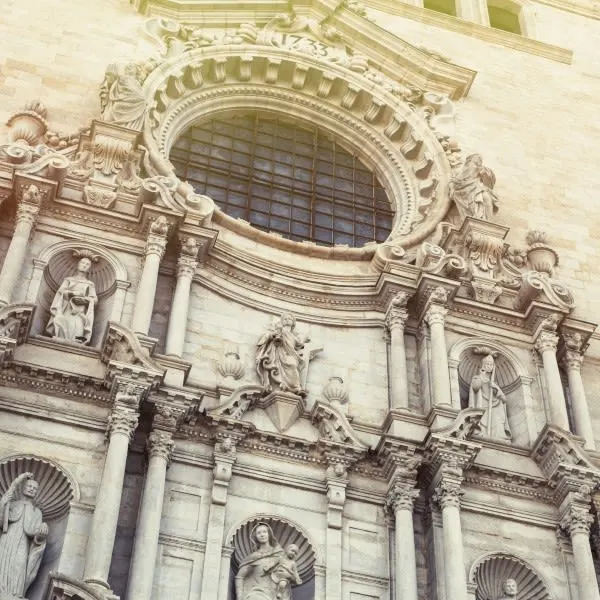
Day 3
Barcelona
View More
Day 3
Barcelona

Morning to Evening
Self Guided Excursion to Girona
Nestled in the heart of Catalonia, Girona is a jewel of medieval architecture and vibrant history. This charming city, just a short train ride from Barcelona, captivates visitors with its picturesque Jewish Quarter, imposing Girona Cathedral, and the colorful houses lining the Onyar River. You can spend the day exploring the city's rich history, sights, museums and ancient walls. A visit here is a step back in time amidst the backdrop of modern Catalan life.

Girona Cathedral
Marvel at the grandeur of Girona Cathedral, an architectural gem blending Romanesque, Gothic, and Baroque styles, offering breathtaking views over the city from its elevated position.
Show More

Arab Baths
Step back in time at the Arab Baths, a stunning example of medieval architecture inspired by Roman and Moorish influences.
Show More

Cases de l'Onyar
Marvel at the colorful riverfront houses of the Onyar River, a picturesque sight that captures the essence of Girona's historical charm.
Show More

Girona Cathedral
Marvel at the grandeur of Girona Cathedral, an architectural gem blending Romanesque, Gothic, and Baroque styles, offering breathtaking views over the city from its elevated position.
Show More

Arab Baths
Step back in time at the Arab Baths, a stunning example of medieval architecture inspired by Roman and Moorish influences.
Show More

Cases de l'Onyar
Marvel at the colorful riverfront houses of the Onyar River, a picturesque sight that captures the essence of Girona's historical charm.
Show More

Girona Cathedral
Marvel at the grandeur of Girona Cathedral, an architectural gem blending Romanesque, Gothic, and Baroque styles, offering breathtaking views over the city from its elevated position.
Show More
prev
next

Day 3
Barcelona
View More


Girona Cathedral
 Highlight of Excursion to Girona
Highlight of Excursion to GironaMarvel at the grandeur of Girona Cathedral, an architectural gem blending Romanesque, Gothic, and Baroque styles, offering breathtaking views over the city from its elevated position.
Perched atop 90 steps, the Girona Cathedral, also known as the Cathedral of Saint Mary of Girona, dominates the skyline with its imposing presence. Construction began in the 11th century, and its design evolved over centuries, incorporating a unique mix of architectural styles. The cathedral boasts the widest Gothic nave in the world, a testament to the city's historical wealth and artistic ambition. Inside, visitors can admire exquisite stained glass windows, a beautifully carved altarpiece, and a collection of medieval manuscripts and artifacts. The cathedral's location provides a stunning panoramic view of Girona, making it a must-visit highlight for both its historical significance and aesthetic beauty.
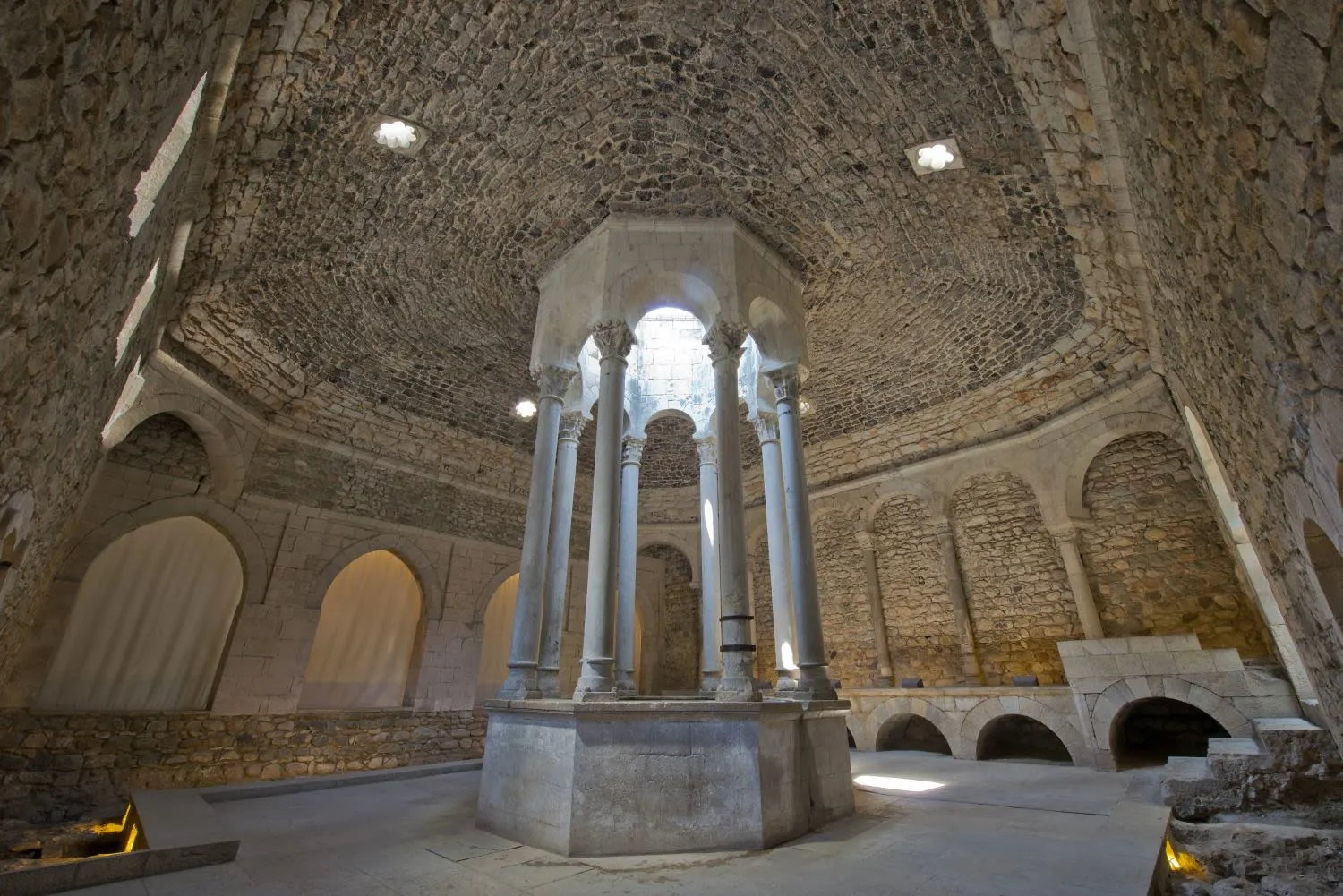
Arab Baths
 Highlight of Excursion to Girona
Highlight of Excursion to GironaStep back in time at the Arab Baths, a stunning example of medieval architecture inspired by Roman and Moorish influences.
The Arab Baths, or Banys Àrabs, in Girona are a unique blend of Roman and Moorish architectural styles, dating back to the 12th century. Originally constructed as public baths, they feature a distinct layout with a central octagonal pool, surrounded by slender columns and intricately carved arches. The baths were used for various purposes, including hygiene, relaxation, and social gatherings, reflecting the cultural influences of the time. Today, visitors can explore the well-preserved structure and admire its historical significance and architectural beauty. The serene ambiance and the detailed stonework offer a fascinating glimpse into Girona's rich past.
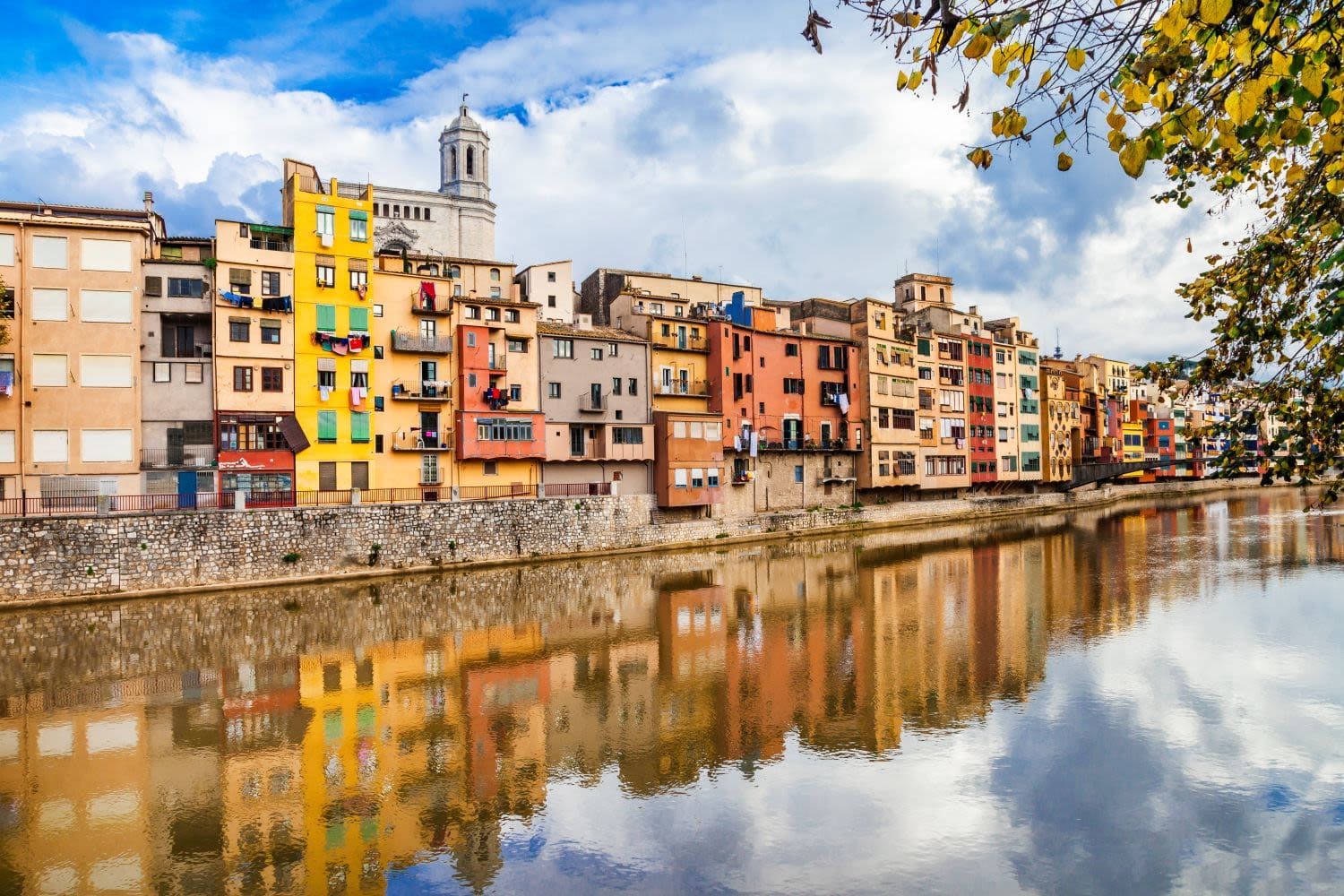
Cases de l'Onyar
 Highlight of Excursion to Girona
Highlight of Excursion to GironaMarvel at the colorful riverfront houses of the Onyar River, a picturesque sight that captures the essence of Girona's historical charm.
The Casas del Onyar are an iconic series of colorful houses that line the banks of the Onyar River in Girona, Spain. These vibrant facades, reflecting in the water, create a stunning visual spectacle that has become a symbol of the city. Dating back to medieval times, these houses have been meticulously preserved and restored, showcasing a variety of architectural styles and hues. Walking along the riverbank or crossing one of the charming pedestrian bridges, visitors can appreciate the harmonious blend of history and aesthetics. The area is not just visually appealing but also steeped in history, with each house telling a story of Girona's rich cultural heritage.

Girona Cathedral
 Highlight of Excursion to Girona
Highlight of Excursion to GironaMarvel at the grandeur of Girona Cathedral, an architectural gem blending Romanesque, Gothic, and Baroque styles, offering breathtaking views over the city from its elevated position.
Perched atop 90 steps, the Girona Cathedral, also known as the Cathedral of Saint Mary of Girona, dominates the skyline with its imposing presence. Construction began in the 11th century, and its design evolved over centuries, incorporating a unique mix of architectural styles. The cathedral boasts the widest Gothic nave in the world, a testament to the city's historical wealth and artistic ambition. Inside, visitors can admire exquisite stained glass windows, a beautifully carved altarpiece, and a collection of medieval manuscripts and artifacts. The cathedral's location provides a stunning panoramic view of Girona, making it a must-visit highlight for both its historical significance and aesthetic beauty.

Arab Baths
 Highlight of Excursion to Girona
Highlight of Excursion to GironaStep back in time at the Arab Baths, a stunning example of medieval architecture inspired by Roman and Moorish influences.
The Arab Baths, or Banys Àrabs, in Girona are a unique blend of Roman and Moorish architectural styles, dating back to the 12th century. Originally constructed as public baths, they feature a distinct layout with a central octagonal pool, surrounded by slender columns and intricately carved arches. The baths were used for various purposes, including hygiene, relaxation, and social gatherings, reflecting the cultural influences of the time. Today, visitors can explore the well-preserved structure and admire its historical significance and architectural beauty. The serene ambiance and the detailed stonework offer a fascinating glimpse into Girona's rich past.

Cases de l'Onyar
 Highlight of Excursion to Girona
Highlight of Excursion to GironaMarvel at the colorful riverfront houses of the Onyar River, a picturesque sight that captures the essence of Girona's historical charm.
The Casas del Onyar are an iconic series of colorful houses that line the banks of the Onyar River in Girona, Spain. These vibrant facades, reflecting in the water, create a stunning visual spectacle that has become a symbol of the city. Dating back to medieval times, these houses have been meticulously preserved and restored, showcasing a variety of architectural styles and hues. Walking along the riverbank or crossing one of the charming pedestrian bridges, visitors can appreciate the harmonious blend of history and aesthetics. The area is not just visually appealing but also steeped in history, with each house telling a story of Girona's rich cultural heritage.

Girona Cathedral
 Highlight of Excursion to Girona
Highlight of Excursion to GironaMarvel at the grandeur of Girona Cathedral, an architectural gem blending Romanesque, Gothic, and Baroque styles, offering breathtaking views over the city from its elevated position.
Perched atop 90 steps, the Girona Cathedral, also known as the Cathedral of Saint Mary of Girona, dominates the skyline with its imposing presence. Construction began in the 11th century, and its design evolved over centuries, incorporating a unique mix of architectural styles. The cathedral boasts the widest Gothic nave in the world, a testament to the city's historical wealth and artistic ambition. Inside, visitors can admire exquisite stained glass windows, a beautifully carved altarpiece, and a collection of medieval manuscripts and artifacts. The cathedral's location provides a stunning panoramic view of Girona, making it a must-visit highlight for both its historical significance and aesthetic beauty.
prev
next


Day 4
Barcelona to Madrid
View More
Day 4
Barcelona to Madrid





9:00 AM - 1:00 PM
Exploring the Gothic Quarter in the footsteps of Picasso
Join this four-hour tour through Barcelona's "Gothic Quarter", exploring its ancient, narrow streets. See the medieval walls, stroll down Las Ramblas, pass by the Gothic Cathedral and discover the Jewish Quarter before learning how this "Gothic Quarter" gave rise to an artist of the magnitude of Picasso. End your tour with a visit to the Picasso Museum. Note tickets are included for the Picasso Museum.

Day 4
Barcelona to Madrid
View More



Day 5
Madrid
View More
Day 5
Madrid




9:30 AM - 12:30 PM
Highlights of Madrid Private Walking Tour
Immerse yourself in the heart of Spanish history with a captivating 3-hour walking tour in Madrid, focusing on the majestic Royal Palace (exterior) and the bustling Plaza Mayor. At the Royal Palace, you will learn how the Habsburg Empire came to Spain, grew to cover the New World, and then discovered that the Iberian peninsula was enough land. Then, meander toward the vibrant Plaza Mayor, a grand square framed by historic buildings, lively cafes, and street performers. Among the frescos of these Baroque buildings you'll hear Madrid's history, the good and the bad, the everyday and the dramatic. Through it all, you will have the chance to see and hear the buzz of life the proceeds from Spain's capital!

Day 5
Madrid
View More



Day 6
Madrid
View More
Day 6
Madrid


Morning to Afternoon
Self-Guided Excursion to the Royal Monastery of El Escorial
Take a trip into the mountains just outside of Madrid and disover El Escorial. At one time a royal monastery filled with monks praying for the Spanish Empire, El Escorial also served as a royal retreat. Since the king and family slept there, many of the rooms are far from austere. Where once only a precious few could admire the frescos and statues of the largest Renaissance building in the world, you can freely visit!

El Escorial Monastery
The inhabitants were sworn to poverty, the furnishings, not so much.
Show More

La Herrería Forest
Roam the woods and fields of this former royal hunting ground.
Show More

El Escorial Monastery
The inhabitants were sworn to poverty, the furnishings, not so much.
Show More

La Herrería Forest
Roam the woods and fields of this former royal hunting ground.
Show More

El Escorial Monastery
The inhabitants were sworn to poverty, the furnishings, not so much.
Show More

La Herrería Forest
Roam the woods and fields of this former royal hunting ground.
Show More
prev
next

Day 6
Madrid
View More


El Escorial Monastery
 Highlight of Excursion to El Escorial
Highlight of Excursion to El Escorial The inhabitants were sworn to poverty, the furnishings, not so much.
Set in the rugged landscapes of Central Spain, ever turn at El Escorial will awe you. With the Habsburgs running the show in the 16th century, Spain needed a lot of prayers, and the royal family set up this monastery specifically that monks would pray for them. King and family had their spaces too, big ones: it is the largest Renaissance building in the world.
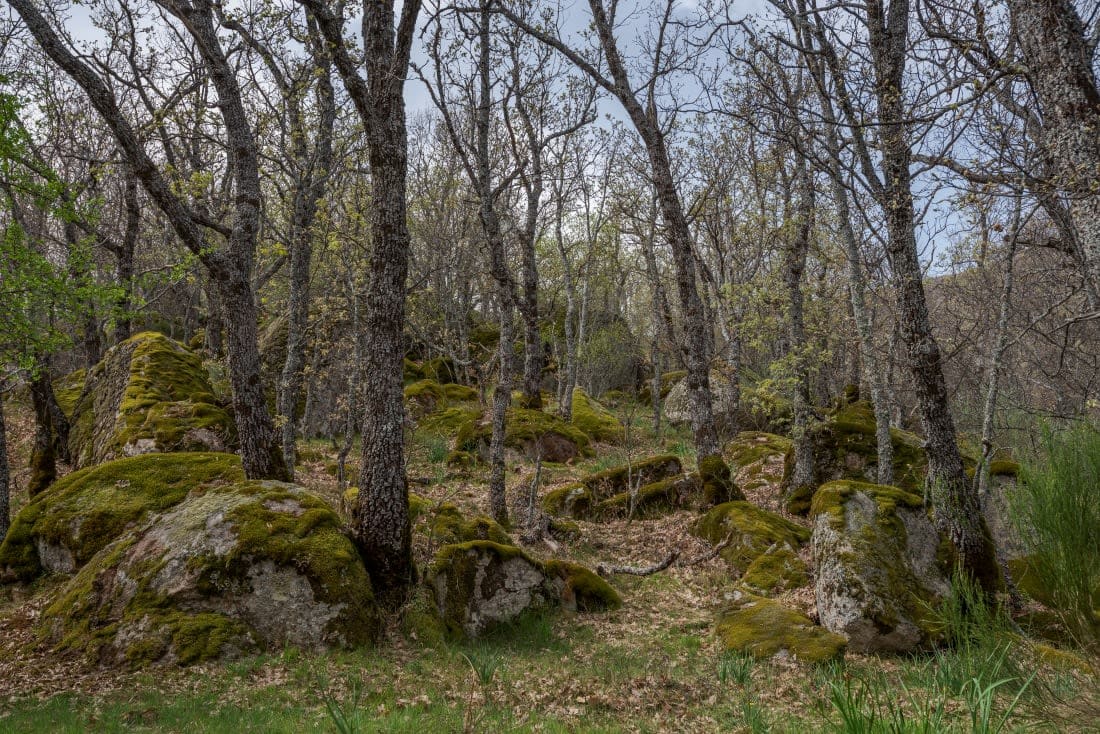
La Herrería Forest
 Highlight of Excursion to El Escorial
Highlight of Excursion to El Escorial Roam the woods and fields of this former royal hunting ground.
There was a time, from 1561 to about 1870, that to be an animal here meant you were a trophy or dinner. The vast royal hunting grounds, of which only La Herrería Forest remain, was the playground of the Spanish King. Nowadays, this undulating landscapes especially protects the large variety of birds that flit through the Pyrenean oak Cherry trees. Deer, the occasional shy bobcat, and even otters grace the landscape, and maybe even they appreciate the stunning views of the El Escorial Monastery.

El Escorial Monastery
 Highlight of Excursion to El Escorial
Highlight of Excursion to El Escorial The inhabitants were sworn to poverty, the furnishings, not so much.
Set in the rugged landscapes of Central Spain, ever turn at El Escorial will awe you. With the Habsburgs running the show in the 16th century, Spain needed a lot of prayers, and the royal family set up this monastery specifically that monks would pray for them. King and family had their spaces too, big ones: it is the largest Renaissance building in the world.

La Herrería Forest
 Highlight of Excursion to El Escorial
Highlight of Excursion to El Escorial Roam the woods and fields of this former royal hunting ground.
There was a time, from 1561 to about 1870, that to be an animal here meant you were a trophy or dinner. The vast royal hunting grounds, of which only La Herrería Forest remain, was the playground of the Spanish King. Nowadays, this undulating landscapes especially protects the large variety of birds that flit through the Pyrenean oak Cherry trees. Deer, the occasional shy bobcat, and even otters grace the landscape, and maybe even they appreciate the stunning views of the El Escorial Monastery.

El Escorial Monastery
 Highlight of Excursion to El Escorial
Highlight of Excursion to El Escorial The inhabitants were sworn to poverty, the furnishings, not so much.
Set in the rugged landscapes of Central Spain, ever turn at El Escorial will awe you. With the Habsburgs running the show in the 16th century, Spain needed a lot of prayers, and the royal family set up this monastery specifically that monks would pray for them. King and family had their spaces too, big ones: it is the largest Renaissance building in the world.

La Herrería Forest
 Highlight of Excursion to El Escorial
Highlight of Excursion to El Escorial Roam the woods and fields of this former royal hunting ground.
There was a time, from 1561 to about 1870, that to be an animal here meant you were a trophy or dinner. The vast royal hunting grounds, of which only La Herrería Forest remain, was the playground of the Spanish King. Nowadays, this undulating landscapes especially protects the large variety of birds that flit through the Pyrenean oak Cherry trees. Deer, the occasional shy bobcat, and even otters grace the landscape, and maybe even they appreciate the stunning views of the El Escorial Monastery.
prev
next


Day 7
Madrid to Porto
View More
Day 7
Madrid to Porto




Morning/Mid-Day
Explore Chic Salamanca & Nearby Museums
The Salamanca District in Madrid is known for its refined elegance, with a mix of luxurious shopping, fine dining, and rich cultural experiences. Elegant, Nineteeth-century flourishes characterize the architecture, and upscale boutiques, art galleries, and superlative restaurants characterize its streets. The National Archaeological Museum is also found in Salamanca, and the immensely happy and intimate Sorolla Museum rests not far. The district's broad, tree-lined streets and sophisticated atmosphere have politely invited you to visit: Shall you accept?

National Library of Spain
Explore the vast collections of Spain's national heritage at the National Library of Spain.
Show More

Basílica de la Concepción de Nuestra Señora
Explore the stunning architecture and serene atmosphere of the Basilica of the Conception of Our Lady, a hidden gem in the heart of Madrid.
Show More

Sweet Space Museum
Immerse yourself in a colorful, interactive experience where art, technology, and sweets collide in Madrid's Sweet Space Museum.
Show More

Lázaro Galdiano Museum
Wander through the exquisite halls of the Lázaro Galdiano Museum, where over 9,000 pieces of European art and decorative objects, collected by financier José Lázaro Galdiano, are on display.
Show More

Cicero Madrid
Immerse yourself in the vibrant culinary scene of Madrid at Cicero Madrid, maybe even with your own personal chef!
Show More

National Archaeological Museum
Spain, FYI, is not new...
Show More

Calle de José Ortega y Gasset
Check out the goods on Madrid's most luxurious shopping street.
Show More

Sorolla Museum
The Light thatInfused His Paintings...
Show More

Calle de Claudio Coello
Stroll through the upscale charm of Calle de Claudio Coello, a premier shopping street lined with designer boutiques and elegant cafes.
Show More

Calle de Jorge Juan
Stroll along Calle de Jorge Juan for an upscale shopping and dining experience in Madrid’s Salamanca district.
Show More

National Library of Spain
Explore the vast collections of Spain's national heritage at the National Library of Spain.
Show More

Basílica de la Concepción de Nuestra Señora
Explore the stunning architecture and serene atmosphere of the Basilica of the Conception of Our Lady, a hidden gem in the heart of Madrid.
Show More

Sweet Space Museum
Immerse yourself in a colorful, interactive experience where art, technology, and sweets collide in Madrid's Sweet Space Museum.
Show More

Lázaro Galdiano Museum
Wander through the exquisite halls of the Lázaro Galdiano Museum, where over 9,000 pieces of European art and decorative objects, collected by financier José Lázaro Galdiano, are on display.
Show More

Cicero Madrid
Immerse yourself in the vibrant culinary scene of Madrid at Cicero Madrid, maybe even with your own personal chef!
Show More

National Archaeological Museum
Spain, FYI, is not new...
Show More

Calle de José Ortega y Gasset
Check out the goods on Madrid's most luxurious shopping street.
Show More

Sorolla Museum
The Light thatInfused His Paintings...
Show More

Calle de Claudio Coello
Stroll through the upscale charm of Calle de Claudio Coello, a premier shopping street lined with designer boutiques and elegant cafes.
Show More

Calle de Jorge Juan
Stroll along Calle de Jorge Juan for an upscale shopping and dining experience in Madrid’s Salamanca district.
Show More
prev
next

Day 7
Madrid to Porto
View More


National Library of Spain
 Highlight of Salamanca District
Highlight of Salamanca DistrictExplore the vast collections of Spain's national heritage at the National Library of Spain.
The National Libarary of Spain is the largest library in Spain and one of the most important in the world. Established in 1712 by King Philip V, it houses over 30 million items, including rare manuscripts, incunabula, maps, and historical documents that span centuries of Spanish history and culture. With it's neoclassical architecture, stunning reading rooms and exhibitions, it is not just a repository of books but a vital cultural institution that preserves the nation's intellectual heritage.

Basílica de la Concepción de Nuestra Señora
 Highlight of Salamanca District
Highlight of Salamanca DistrictExplore the stunning architecture and serene atmosphere of the Basilica of the Conception of Our Lady, a hidden gem in the heart of Madrid.
Built between 1902 and 1914, the Basílica de la Concepción de Nuestra Señora stands out with its beautiful white façade and intricate neo-Gothic details, a contrast to the modernity of its surroundings. The church, designed by Jesús Encina, showcases exquisite stained-glass windows, soaring spires, and a masterfully crafted interior that evokes a sense of reverence and tranquility. This lesser-known basilica offers a serene escape and a glimpse into the architectural trends of early 20th-century Spain, making it a worthwhile stop for those exploring Madrid’s diverse religious and historical sites.

Sweet Space Museum
 Highlight of Salamanca District
Highlight of Salamanca DistrictImmerse yourself in a colorful, interactive experience where art, technology, and sweets collide in Madrid's Sweet Space Museum.
The Sweet Space Museum offers a unique, multi-sensory journey through a series of vibrant, candy-themed rooms designed by various artists. Each space combines art installations with playful elements, from giant lollipops to neon-lit tunnels, creating an environment where imagination takes center stage. Perfect for both adults and children, this museum allows visitors to touch, taste, and interact with the exhibits, making it a delightful experience for anyone with a sweet tooth or a love for whimsical art. Don't miss the chance to snap fun photos at every turn! ENTER THROUGH THE ABC SERRANO SHOPPING MALL

Lázaro Galdiano Museum
 Highlight of Salamanca District
Highlight of Salamanca DistrictWander through the exquisite halls of the Lázaro Galdiano Museum, where over 9,000 pieces of European art and decorative objects, collected by financier José Lázaro Galdiano, are on display.
The Lázaro Galdiano Museum houses the vast and diverse art collection of José Lázaro Galdiano, a prominent Spanish financier and bibliophile. This museum, located in his former residence, showcases over 12,000 pieces, including works by masters such as Goya, El Greco, and Bosch. The collection is notable for its eclectic range, featuring paintings, sculptures, jewelry, and rare books, reflecting the diverse interests and refined tastes of its founder. The museum's collection offers a unique window into European art history and is a must-visit for art lovers seeking a more intimate museum experience in Madrid.

Cicero Madrid
 Highlight of Salamanca District
Highlight of Salamanca DistrictImmerse yourself in the vibrant culinary scene of Madrid at Cicero Madrid, maybe even with your own personal chef!
Cicero Madrid is a highly-rated restaurant, great for those seeking an authentic yet contemporary Spanish dining experience. Located in the heart of Madrid, this restaurant is renowned for its creative take on classic Spanish dishes, using fresh, locally sourced ingredients. One of its most celebrated attractions is its Cícero Table, a communal table for 18 diners at which a private chef cooks and dialogues with customers. If you are interested in the Cicero Table visit their website: https://ciceromadrid.es/cicero-experience/, there you will find details and a contact to make a reservation. PLEASE NOTE: As of September 2024 Cicero Madrid is temporarily closed, visit their website (above) and see if that has changed.

National Archaeological Museum
 Highlight of Salamanca District
Highlight of Salamanca DistrictSpain, FYI, is not new...
...and the National Archaeological Museum reveals just how far back people have been partying on the Iberian Peninsula. Presenting Spain's underappreciated history, from prehistoric artifacts to the modern era, the museum includes intricate, pre-Roman sculptures, Roman artifacts, and Medieval treasures, illustrating the country's complicated cultural heritage.

Calle de José Ortega y Gasset
 Highlight of Salamanca District
Highlight of Salamanca DistrictCheck out the goods on Madrid's most luxurious shopping street.
Calle de José Ortega y Gasset rests as Madrid's emblem of luxury, lined with the finest boutiques and flagship stores of international fashion houses. This prestigious street lends a Spanish accent to the finer things in life. With its elegant facades and exclusive atmosphere, it's the height of fashion and sophistication in Spain's capital to shop here.

Sorolla Museum
 Highlight of Salamanca District
Highlight of Salamanca DistrictThe Light thatInfused His Paintings...
... Seemed to infuse his life and home too. Not every artist is tortured. The Sorolla Museum, located just beyond the Salamanca District, was once the residence and studio of the painter Joaquín Sorolla. Today it showcases the artist's masterpieces among the furnishings and other personal items. Visitors are treated to rooms filled with light, color, and the serene beauty that defines Sorolla's work, all preserved in the intimate setting of his former home. The museum's gardens, designed by Sorolla himself, contain a central fountain.
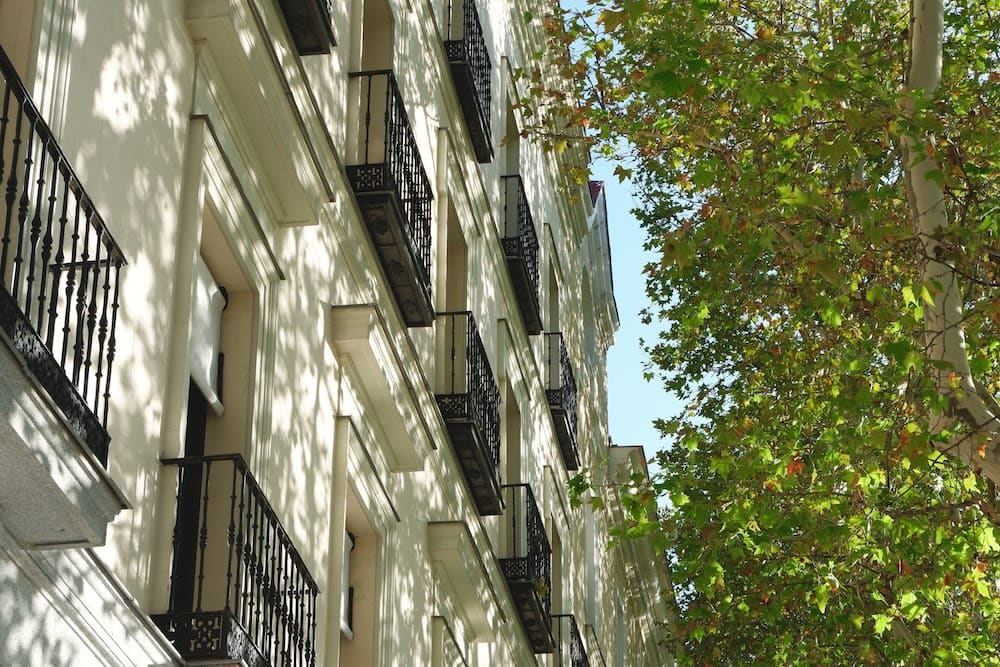
Calle de Claudio Coello
 Highlight of Salamanca District
Highlight of Salamanca DistrictStroll through the upscale charm of Calle de Claudio Coello, a premier shopping street lined with designer boutiques and elegant cafes.
Calle de Claudio Coello is a must-visit destination for luxury shopping enthusiasts in Madrid’s prestigious Salamanca district. This tree-lined avenue is home to an array of high-end fashion boutiques, from renowned international designers to exclusive local brands. The street exudes an air of sophistication, with its stylish storefronts and meticulously curated displays inviting you to indulge in a world of fashion and luxury. In addition to shopping, the street offers a selection of chic cafes and gourmet eateries, perfect for taking a leisurely break while soaking in the refined atmosphere of one of Madrid’s most fashionable neighborhoods.
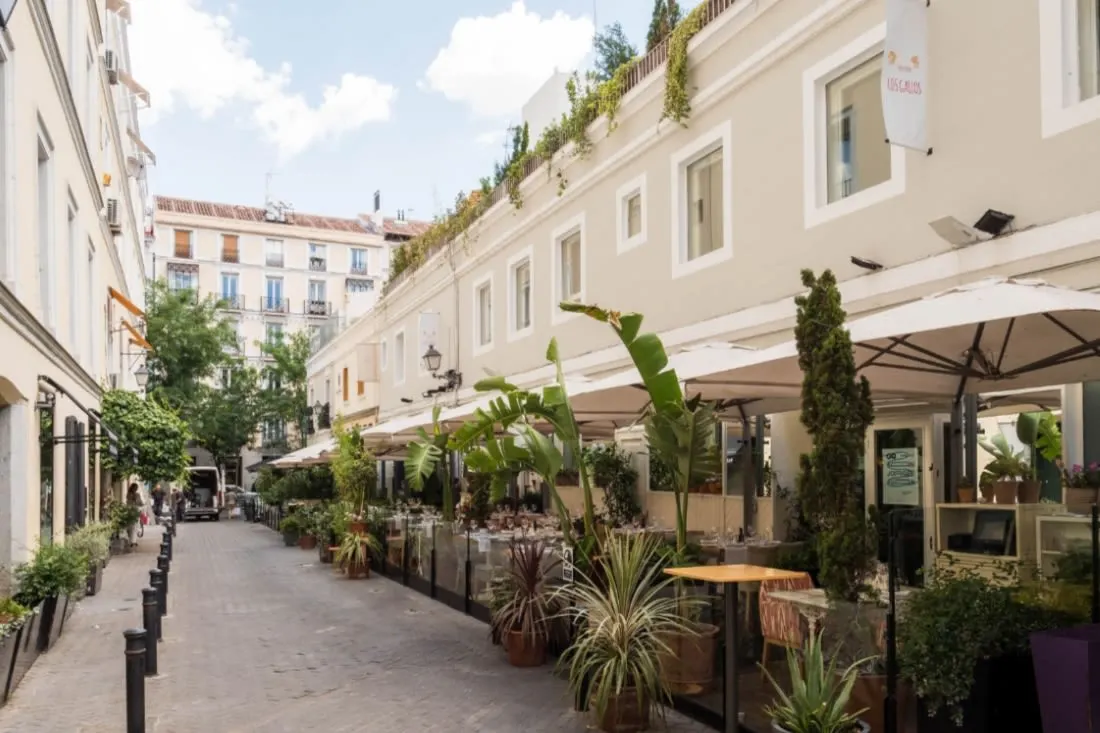
Calle de Jorge Juan
 Highlight of Salamanca District
Highlight of Salamanca DistrictStroll along Calle de Jorge Juan for an upscale shopping and dining experience in Madrid’s Salamanca district.
Calle de Jorge Juan is one of the most elegant streets in Madrid, located in the fashionable Salamanca neighborhood. Known for its luxury boutiques, high-end restaurants, and vibrant atmosphere, this street offers a perfect blend of traditional Spanish charm and modern sophistication. Wander through the tree-lined avenues, explore designer stores like Loewe and Prada, and indulge in gourmet cuisine at Michelin-starred restaurants.

National Library of Spain
 Highlight of Salamanca District
Highlight of Salamanca DistrictExplore the vast collections of Spain's national heritage at the National Library of Spain.
The National Libarary of Spain is the largest library in Spain and one of the most important in the world. Established in 1712 by King Philip V, it houses over 30 million items, including rare manuscripts, incunabula, maps, and historical documents that span centuries of Spanish history and culture. With it's neoclassical architecture, stunning reading rooms and exhibitions, it is not just a repository of books but a vital cultural institution that preserves the nation's intellectual heritage.

Basílica de la Concepción de Nuestra Señora
 Highlight of Salamanca District
Highlight of Salamanca DistrictExplore the stunning architecture and serene atmosphere of the Basilica of the Conception of Our Lady, a hidden gem in the heart of Madrid.
Built between 1902 and 1914, the Basílica de la Concepción de Nuestra Señora stands out with its beautiful white façade and intricate neo-Gothic details, a contrast to the modernity of its surroundings. The church, designed by Jesús Encina, showcases exquisite stained-glass windows, soaring spires, and a masterfully crafted interior that evokes a sense of reverence and tranquility. This lesser-known basilica offers a serene escape and a glimpse into the architectural trends of early 20th-century Spain, making it a worthwhile stop for those exploring Madrid’s diverse religious and historical sites.

Sweet Space Museum
 Highlight of Salamanca District
Highlight of Salamanca DistrictImmerse yourself in a colorful, interactive experience where art, technology, and sweets collide in Madrid's Sweet Space Museum.
The Sweet Space Museum offers a unique, multi-sensory journey through a series of vibrant, candy-themed rooms designed by various artists. Each space combines art installations with playful elements, from giant lollipops to neon-lit tunnels, creating an environment where imagination takes center stage. Perfect for both adults and children, this museum allows visitors to touch, taste, and interact with the exhibits, making it a delightful experience for anyone with a sweet tooth or a love for whimsical art. Don't miss the chance to snap fun photos at every turn! ENTER THROUGH THE ABC SERRANO SHOPPING MALL

Lázaro Galdiano Museum
 Highlight of Salamanca District
Highlight of Salamanca DistrictWander through the exquisite halls of the Lázaro Galdiano Museum, where over 9,000 pieces of European art and decorative objects, collected by financier José Lázaro Galdiano, are on display.
The Lázaro Galdiano Museum houses the vast and diverse art collection of José Lázaro Galdiano, a prominent Spanish financier and bibliophile. This museum, located in his former residence, showcases over 12,000 pieces, including works by masters such as Goya, El Greco, and Bosch. The collection is notable for its eclectic range, featuring paintings, sculptures, jewelry, and rare books, reflecting the diverse interests and refined tastes of its founder. The museum's collection offers a unique window into European art history and is a must-visit for art lovers seeking a more intimate museum experience in Madrid.

Cicero Madrid
 Highlight of Salamanca District
Highlight of Salamanca DistrictImmerse yourself in the vibrant culinary scene of Madrid at Cicero Madrid, maybe even with your own personal chef!
Cicero Madrid is a highly-rated restaurant, great for those seeking an authentic yet contemporary Spanish dining experience. Located in the heart of Madrid, this restaurant is renowned for its creative take on classic Spanish dishes, using fresh, locally sourced ingredients. One of its most celebrated attractions is its Cícero Table, a communal table for 18 diners at which a private chef cooks and dialogues with customers. If you are interested in the Cicero Table visit their website: https://ciceromadrid.es/cicero-experience/, there you will find details and a contact to make a reservation. PLEASE NOTE: As of September 2024 Cicero Madrid is temporarily closed, visit their website (above) and see if that has changed.

National Archaeological Museum
 Highlight of Salamanca District
Highlight of Salamanca DistrictSpain, FYI, is not new...
...and the National Archaeological Museum reveals just how far back people have been partying on the Iberian Peninsula. Presenting Spain's underappreciated history, from prehistoric artifacts to the modern era, the museum includes intricate, pre-Roman sculptures, Roman artifacts, and Medieval treasures, illustrating the country's complicated cultural heritage.

Calle de José Ortega y Gasset
 Highlight of Salamanca District
Highlight of Salamanca DistrictCheck out the goods on Madrid's most luxurious shopping street.
Calle de José Ortega y Gasset rests as Madrid's emblem of luxury, lined with the finest boutiques and flagship stores of international fashion houses. This prestigious street lends a Spanish accent to the finer things in life. With its elegant facades and exclusive atmosphere, it's the height of fashion and sophistication in Spain's capital to shop here.

Sorolla Museum
 Highlight of Salamanca District
Highlight of Salamanca DistrictThe Light thatInfused His Paintings...
... Seemed to infuse his life and home too. Not every artist is tortured. The Sorolla Museum, located just beyond the Salamanca District, was once the residence and studio of the painter Joaquín Sorolla. Today it showcases the artist's masterpieces among the furnishings and other personal items. Visitors are treated to rooms filled with light, color, and the serene beauty that defines Sorolla's work, all preserved in the intimate setting of his former home. The museum's gardens, designed by Sorolla himself, contain a central fountain.

Calle de Claudio Coello
 Highlight of Salamanca District
Highlight of Salamanca DistrictStroll through the upscale charm of Calle de Claudio Coello, a premier shopping street lined with designer boutiques and elegant cafes.
Calle de Claudio Coello is a must-visit destination for luxury shopping enthusiasts in Madrid’s prestigious Salamanca district. This tree-lined avenue is home to an array of high-end fashion boutiques, from renowned international designers to exclusive local brands. The street exudes an air of sophistication, with its stylish storefronts and meticulously curated displays inviting you to indulge in a world of fashion and luxury. In addition to shopping, the street offers a selection of chic cafes and gourmet eateries, perfect for taking a leisurely break while soaking in the refined atmosphere of one of Madrid’s most fashionable neighborhoods.

Calle de Jorge Juan
 Highlight of Salamanca District
Highlight of Salamanca DistrictStroll along Calle de Jorge Juan for an upscale shopping and dining experience in Madrid’s Salamanca district.
Calle de Jorge Juan is one of the most elegant streets in Madrid, located in the fashionable Salamanca neighborhood. Known for its luxury boutiques, high-end restaurants, and vibrant atmosphere, this street offers a perfect blend of traditional Spanish charm and modern sophistication. Wander through the tree-lined avenues, explore designer stores like Loewe and Prada, and indulge in gourmet cuisine at Michelin-starred restaurants.
prev
next

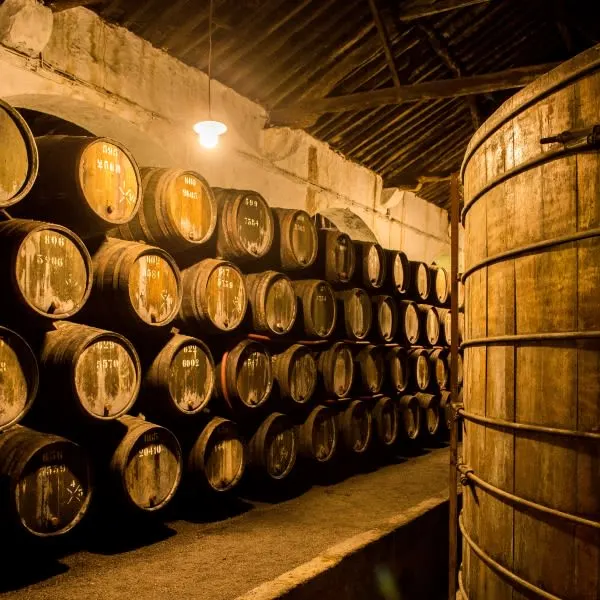
Day 8
Porto
View More
Day 8
Porto



9:00 AM - 1:00 PM
Highlights of Porto Private Guided Walking Tour
Enjoy a 4 hour private guided tour of Porto, Capital of Northern Portugal and UNESCO World Heritage. Everything in this wonderful city makes this tour a memorable trip, from the Cathedral to the Port Wine Cellars, where you can enjoy two wine tastings. You will have the opportunity to discover also about Portuguese tradition and culture and important references will be given about the streets and squares of the historic centre.

Day 8
Porto
View More



Day 9
Porto
View More
Day 9
Porto



Early Morning to Mid-Day
Matosinhos and its Ocean Views
Matosinhos, a happy town just a 30-minute metro-ride away from Porto, provides the beach-bum, or the traveling family, sand between their toes and the cool water of the Atlantic. But why limit yourself to an ocean breeze? The town's renowned municipal market is housed in an attractive architectural monument; Porto's largest green-space abuts the shoreline and invites passerbys to visit its aquarium, Sea Life. Get this, you can visit country's Center for Architecture and go on a tour of a working fish-tinning factory on the same street (It's better than it sounds)! There's even a fortress called "Cheese Castle" but please, don't let your kids try to bite it, and don't try yourself. So many things to see, so much sand and so little time!

Matosinhos Beach
Discover Matosinhos Beach, just a metro ride and short stroll away from Downtown Porto.
Show More

Parque da Cidade
It might look very old, but it holds some modern amenities to make a visit relaxed and leisurely.
Show More

Matosinhos Town Market
Whether cured meats, fresh fish, or vegetables, this market offers it all...
Show More

Pinhais Cannery Museum
Canned Sardines. We know, it doesn't sound exciting. But...
Show More

Matosinhos Beach
Discover Matosinhos Beach, just a metro ride and short stroll away from Downtown Porto.
Show More

Parque da Cidade
It might look very old, but it holds some modern amenities to make a visit relaxed and leisurely.
Show More

Matosinhos Town Market
Whether cured meats, fresh fish, or vegetables, this market offers it all...
Show More

Pinhais Cannery Museum
Canned Sardines. We know, it doesn't sound exciting. But...
Show More
prev
next

Day 9
Porto
View More

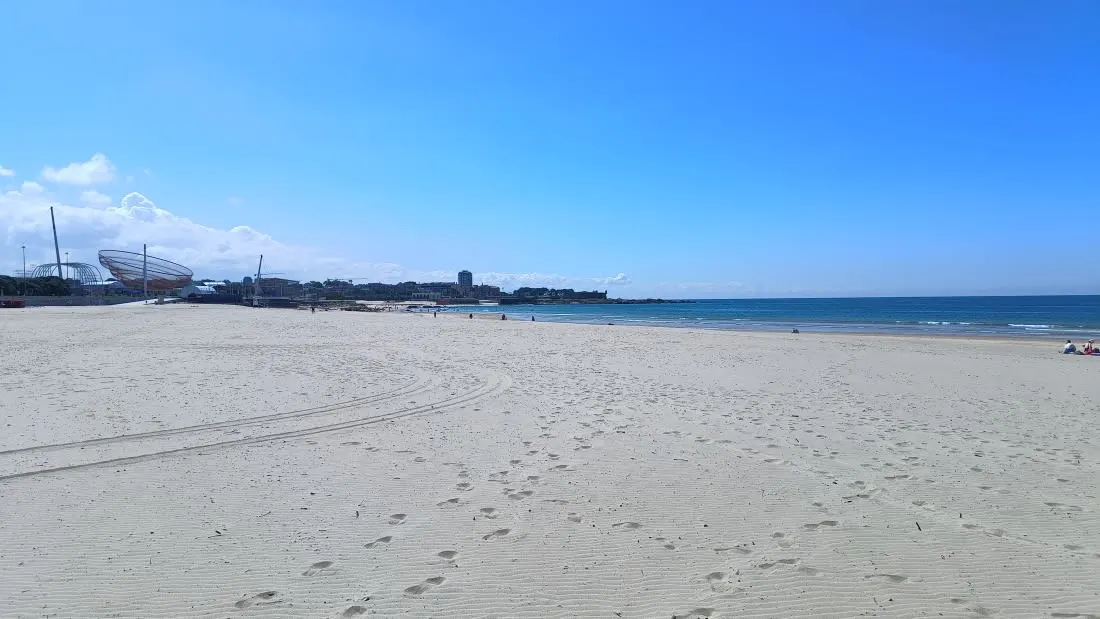
Matosinhos Beach
 Highlight of Matosinhos
Highlight of MatosinhosDiscover Matosinhos Beach, just a metro ride and short stroll away from Downtown Porto.
This expansive beach, a 30-minute metro ride from Downtown Porto, invites locals and tourists to its golden shores Known for its lively atmosphere, Matosinhos Beach has excellent conditions for surfing, thanks to its consistent waves, and hosts numerous surf schools for beginners. Beyond the water, enjoy the bustling promenade lined with seafood restaurants, where you can savor fresh catches of the day. Matosinhos Beach provides a perfect blend of relaxation and activity, at a Portuguese pace.
Parque da Cidade
 Highlight of Matosinhos
Highlight of MatosinhosIt might look very old, but it holds some modern amenities to make a visit relaxed and leisurely.
Porto's largest green-space, the Parque da Cidade makes a visit, well, a walk in the park. Created in 1993. this large public space boasts three ponds, 74 varieties of trees, and a feeling called, "Rural Porto." Using traditional materials and construction techniques, the creators of the park sought to give people a sensation of another era. Cafes appear at either end of this 1km-long park, and bathrooms and water spigots make a visit comfortable and unhurried. The Pavilion of Water located in the northeast corner of the park allows children and adults to learn about H2O.

Matosinhos Town Market
 Highlight of Matosinhos
Highlight of MatosinhosWhether cured meats, fresh fish, or vegetables, this market offers it all...
Matosinhos Market hums a northern Portuguese tune with its local commerce Renowned for its fresh seafood, caught daily by local fishermen and showcased in an array of colorful stalls this exemplar of mid-century architecture can be a pleasure for all five senses. In addition to seafood, you'll find a variety of fresh produce, regional delicacies, and artisanal products, making it a perfect spot to sample the authentic flavors of the region. (Hours: Sunday, closed; Monday, 7-14:00; Tuesday- Friday 6:30-18:00; Saturday, 6:30-16:00)

Pinhais Cannery Museum
 Highlight of Matosinhos
Highlight of MatosinhosCanned Sardines. We know, it doesn't sound exciting. But...
Pinhais Cannery is passionate about what they do at their museum / factory. Commerical fishing is an important part of Portugal's economy, and Pinhais still produces tins by hand, providing jobs for locals and delicious fish to the rest of the world. The 90-minute tour will take you past the dilligent workers and through the history of Portugal's fishing industry; you will even have the chance to wrap your own tin in the distinct, brightly-colored paper of the Pinhais brand.

Matosinhos Beach
 Highlight of Matosinhos
Highlight of MatosinhosDiscover Matosinhos Beach, just a metro ride and short stroll away from Downtown Porto.
This expansive beach, a 30-minute metro ride from Downtown Porto, invites locals and tourists to its golden shores Known for its lively atmosphere, Matosinhos Beach has excellent conditions for surfing, thanks to its consistent waves, and hosts numerous surf schools for beginners. Beyond the water, enjoy the bustling promenade lined with seafood restaurants, where you can savor fresh catches of the day. Matosinhos Beach provides a perfect blend of relaxation and activity, at a Portuguese pace.
Parque da Cidade
 Highlight of Matosinhos
Highlight of MatosinhosIt might look very old, but it holds some modern amenities to make a visit relaxed and leisurely.
Porto's largest green-space, the Parque da Cidade makes a visit, well, a walk in the park. Created in 1993. this large public space boasts three ponds, 74 varieties of trees, and a feeling called, "Rural Porto." Using traditional materials and construction techniques, the creators of the park sought to give people a sensation of another era. Cafes appear at either end of this 1km-long park, and bathrooms and water spigots make a visit comfortable and unhurried. The Pavilion of Water located in the northeast corner of the park allows children and adults to learn about H2O.

Matosinhos Town Market
 Highlight of Matosinhos
Highlight of MatosinhosWhether cured meats, fresh fish, or vegetables, this market offers it all...
Matosinhos Market hums a northern Portuguese tune with its local commerce Renowned for its fresh seafood, caught daily by local fishermen and showcased in an array of colorful stalls this exemplar of mid-century architecture can be a pleasure for all five senses. In addition to seafood, you'll find a variety of fresh produce, regional delicacies, and artisanal products, making it a perfect spot to sample the authentic flavors of the region. (Hours: Sunday, closed; Monday, 7-14:00; Tuesday- Friday 6:30-18:00; Saturday, 6:30-16:00)

Pinhais Cannery Museum
 Highlight of Matosinhos
Highlight of MatosinhosCanned Sardines. We know, it doesn't sound exciting. But...
Pinhais Cannery is passionate about what they do at their museum / factory. Commerical fishing is an important part of Portugal's economy, and Pinhais still produces tins by hand, providing jobs for locals and delicious fish to the rest of the world. The 90-minute tour will take you past the dilligent workers and through the history of Portugal's fishing industry; you will even have the chance to wrap your own tin in the distinct, brightly-colored paper of the Pinhais brand.
prev
next

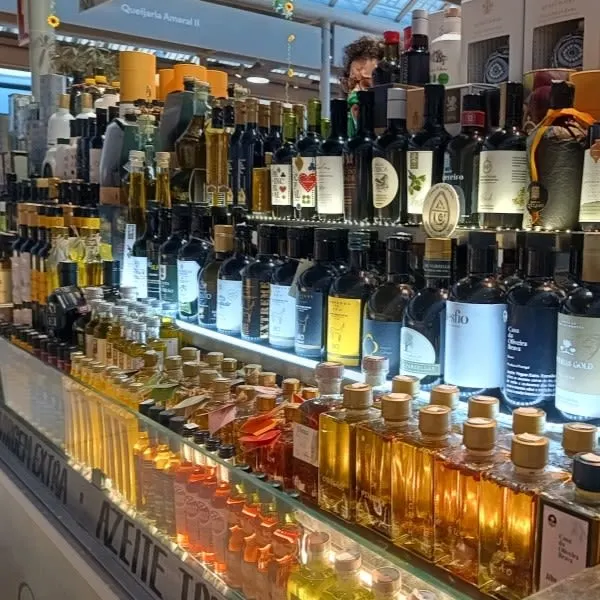
Day 10
Porto to Lisbon
View More
Day 10
Porto to Lisbon




Early Morning/Morning
The Tasty Center of Porto
Locals love it; tourists love it: Bolhão market is the real deal. Wandering up and down the stands can take 10 minutes or two hours, depending on how hungry you are. The city's main market since the 1800s, recent renovations have polished the exterior, while keeping the market's heart alive, the grocers, wine-sellers and fishmongers that epitomize the gastronomy of Northern Portugal. São Lázaro, by contrast, is the delicious, low-brow, cheap-beer-drinking, roast-pork-sandwich-gnoshing night-time neighborhood that starts serving at 11am. Together - Oh, yum!

Day 10
Porto to Lisbon
View More


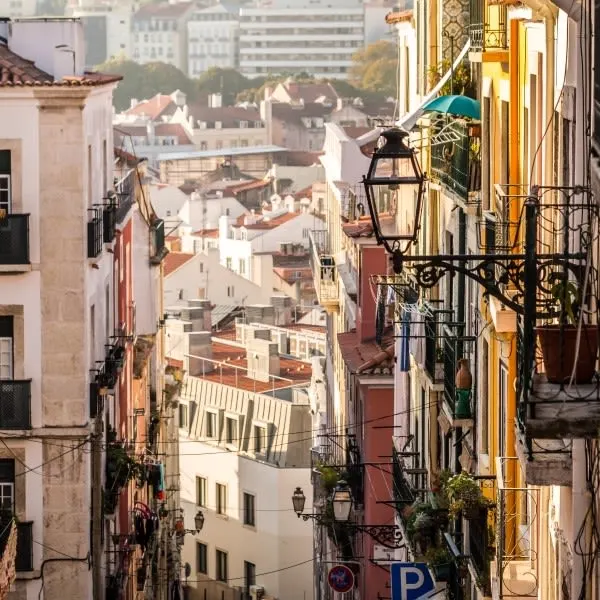
Day 11
Lisbon
View More
Day 11
Lisbon



10:00 AM - 1:00 PM
Introduction to Lisbon Tour: Bairro Alto, Chiado, and Baixa
Immerse yourself in the centuries of history on this 3 hour winding walking tour through the heart of Lisbon. Get acquainted with Lisbon's three most influential neighbourhoods, Bairro Alto, Chiado and Baixa with an expert Lisbon guide who specialises in history and archaeology.

Day 11
Lisbon
View More


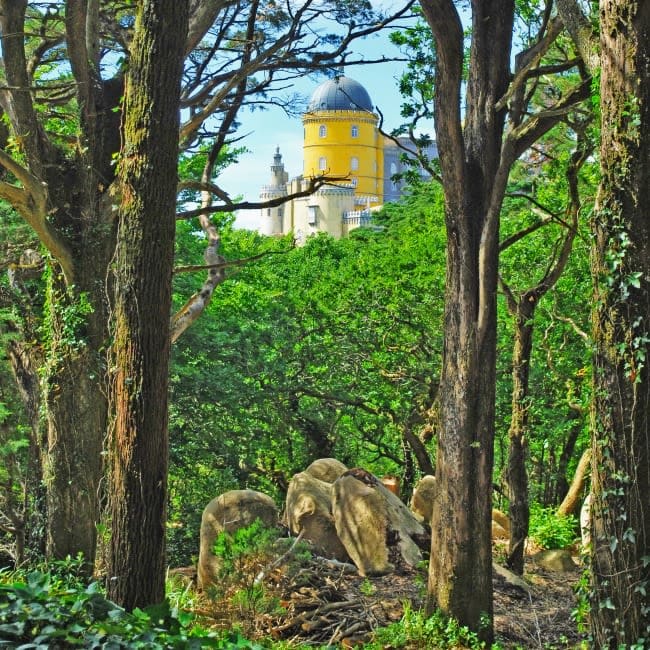
Day 12
Lisbon
View More
Day 12
Lisbon


Morning to Late Afternoon
Looking Up, Looking Down, in Sintra
Sintra is a UNESCO World Heritage site renowned for its stunning landscapes and cultural heritage. Often described as a fairytale destination, Sintra boasts a wealth of historical palaces, castles, and gardens that connect them. Wander through the whimsical Pena Palace, with its vibrant colors and eclectic architecture, or explore the mysterious Quinta da Regaleira, known for its enchanting gardens and enigmatic Initiation Well. The town itself is a charming blend of narrow, cobbled streets, busy shops, and delightful cafes. Surrounded by lush forests and offering spectacular views, Sintra is an escape that captivates visitors with its blend of natural beauty and architectural wonders.

The Moorish Castle of Sintra
Add your footsteps to those of kings, guards, lovers and thrill-seekers.
Show More

Quinta da Regaleira
Explore the mysterious grounds of this 19th-century chateau... They were designed to be mysterious.
Show More

National Palace of Pena
Scale the heights to this pleasure-dome of Portuguese Royalty.
Show More

Palace of Sintra
Gain a sense of Portuguese history while wandering this castle's lavish rooms.
Show More

The Moorish Castle of Sintra
Add your footsteps to those of kings, guards, lovers and thrill-seekers.
Show More

Quinta da Regaleira
Explore the mysterious grounds of this 19th-century chateau... They were designed to be mysterious.
Show More

National Palace of Pena
Scale the heights to this pleasure-dome of Portuguese Royalty.
Show More

Palace of Sintra
Gain a sense of Portuguese history while wandering this castle's lavish rooms.
Show More
prev
next

Day 12
Lisbon
View More

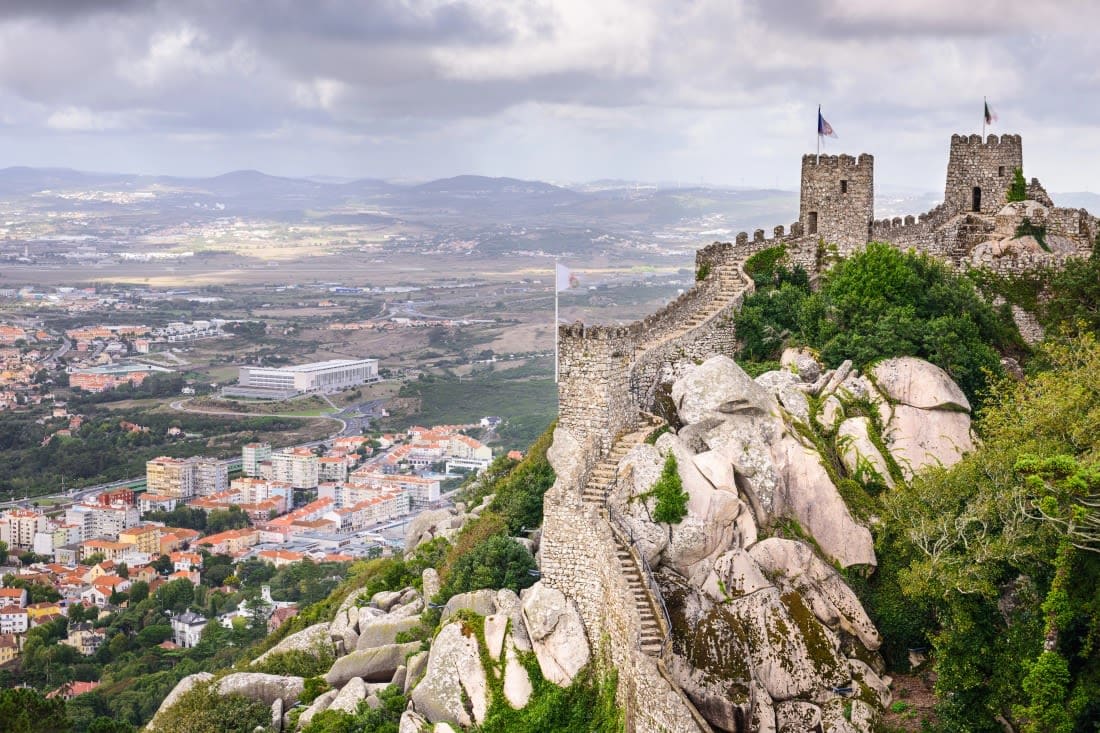
The Moorish Castle of Sintra
 Highlight of Excursion to Sintra
Highlight of Excursion to SintraAdd your footsteps to those of kings, guards, lovers and thrill-seekers.
The Moorish Castle of Sintra, perched high on the hills of the Sintra Mountains in Portugal, is a dramatic ruin offering a glimpse into the region's medieval past. Constructed during the 8th and 9th centuries by the Moors, this fortress served as a strategic defensive outpost. Visitors can walk along its restored battlements, which provide breathtaking panoramic views of Sintra, the Atlantic Ocean, and the lush surrounding forests. The castle's stone walls, towers, and ancient cisterns evoke the era of Muslim rule and the subsequent Christian Reconquest. Exploring the Moorish Castle of Sintra is a journey through history, where you can imagine the lives of its inhabitants while enjoying one of the most spectacular vistas in Portugal.

Quinta da Regaleira
 Highlight of Excursion to Sintra
Highlight of Excursion to SintraExplore the mysterious grounds of this 19th-century chateau... They were designed to be mysterious.
Quinta da Regaleira is an ornate estate located near Sintra's historic center, famous for its elaborate gardens and mysterious symbolism. Commissioned by the wealthy Portuguese businessman António Augusto Carvalho Monteiro and designed by Italian architect Luigi Manini, the estate was completed in 1910 and the estate's design reflects Monteiro's interests in alchemy, Freemasonry, and the Rosicrucians. In 1997, it was purchased by the Portuguese government, has becoming a popular tourist destination.

National Palace of Pena
 Highlight of Excursion to Sintra
Highlight of Excursion to SintraScale the heights to this pleasure-dome of Portuguese Royalty.
The National Palace of Pena, perched atop a peak in the Sintra Mountains of Portugal, is a striking example of 19th-century Romanticism. This colorful palace, in vivid hues of red and yellow, is a UNESCO World Heritage site and one of Portugal's Seven Wonders. Originally a monastery, it was transformed into a royal retreat by King Ferdinand II, who infused the design with eclectic elements from Gothic, Renaissance, and Moorish styles. Visitors can explore its lavishly decorated interiors, including the opulent Royal Dining Room and the serene Chapel of Our Lady of Pena. The palace is surrounded by the Pena Park, a sprawling forested area with exotic plants, winding paths, and stunning viewpoints. A visit to the National Palace of Pena offers a magical glimpse into Portugal's royal history and architectural splendor.
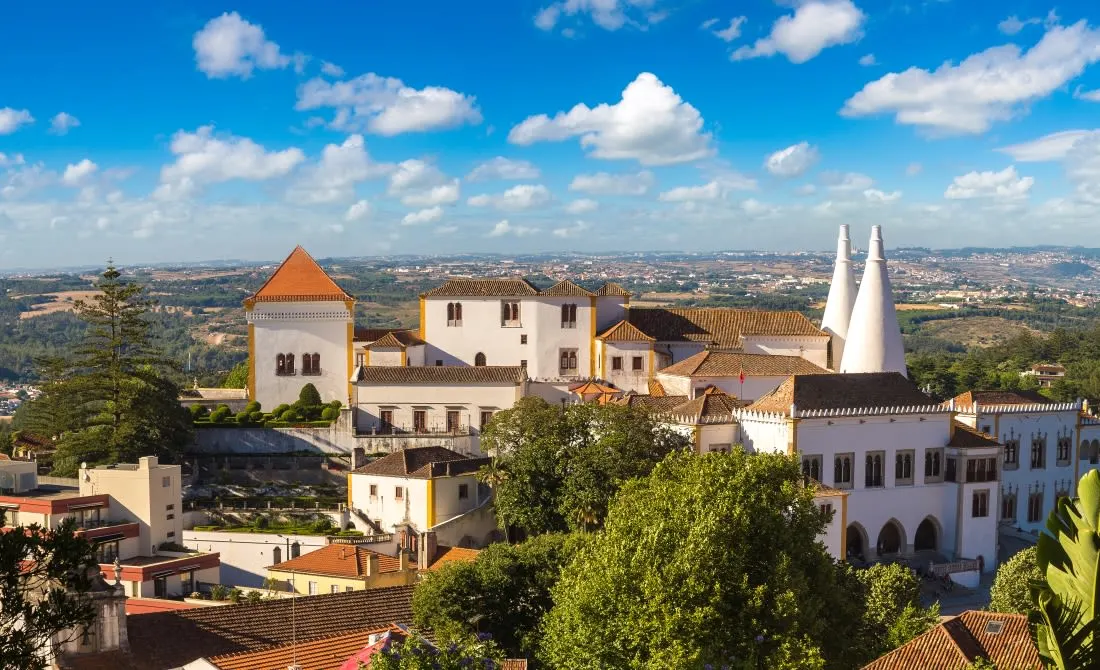
Palace of Sintra
 Highlight of Excursion to Sintra
Highlight of Excursion to SintraGain a sense of Portuguese history while wandering this castle's lavish rooms.
The National Palace of Sintra is a stunning example of Manueline and Moorish architecture. A significant site since the 15th century, it is the best-preserved medieval royal residence in Portugal. Distinguished by its two massive, conical chimneys, the palace contains ornate rooms such as the Swan Room, the Magpie Room, and the Coats of Arms Room, each adorned with intricate tilework and ceiling paintings. The palace also features beautifully landscaped courtyards and patios, offering lofty views of the surrounding landscape. A visit to the National Palace of Sintra reveals the lifestyle of Portuguese royalty and the artistic heritage of the region.

The Moorish Castle of Sintra
 Highlight of Excursion to Sintra
Highlight of Excursion to SintraAdd your footsteps to those of kings, guards, lovers and thrill-seekers.
The Moorish Castle of Sintra, perched high on the hills of the Sintra Mountains in Portugal, is a dramatic ruin offering a glimpse into the region's medieval past. Constructed during the 8th and 9th centuries by the Moors, this fortress served as a strategic defensive outpost. Visitors can walk along its restored battlements, which provide breathtaking panoramic views of Sintra, the Atlantic Ocean, and the lush surrounding forests. The castle's stone walls, towers, and ancient cisterns evoke the era of Muslim rule and the subsequent Christian Reconquest. Exploring the Moorish Castle of Sintra is a journey through history, where you can imagine the lives of its inhabitants while enjoying one of the most spectacular vistas in Portugal.

Quinta da Regaleira
 Highlight of Excursion to Sintra
Highlight of Excursion to SintraExplore the mysterious grounds of this 19th-century chateau... They were designed to be mysterious.
Quinta da Regaleira is an ornate estate located near Sintra's historic center, famous for its elaborate gardens and mysterious symbolism. Commissioned by the wealthy Portuguese businessman António Augusto Carvalho Monteiro and designed by Italian architect Luigi Manini, the estate was completed in 1910 and the estate's design reflects Monteiro's interests in alchemy, Freemasonry, and the Rosicrucians. In 1997, it was purchased by the Portuguese government, has becoming a popular tourist destination.

National Palace of Pena
 Highlight of Excursion to Sintra
Highlight of Excursion to SintraScale the heights to this pleasure-dome of Portuguese Royalty.
The National Palace of Pena, perched atop a peak in the Sintra Mountains of Portugal, is a striking example of 19th-century Romanticism. This colorful palace, in vivid hues of red and yellow, is a UNESCO World Heritage site and one of Portugal's Seven Wonders. Originally a monastery, it was transformed into a royal retreat by King Ferdinand II, who infused the design with eclectic elements from Gothic, Renaissance, and Moorish styles. Visitors can explore its lavishly decorated interiors, including the opulent Royal Dining Room and the serene Chapel of Our Lady of Pena. The palace is surrounded by the Pena Park, a sprawling forested area with exotic plants, winding paths, and stunning viewpoints. A visit to the National Palace of Pena offers a magical glimpse into Portugal's royal history and architectural splendor.

Palace of Sintra
 Highlight of Excursion to Sintra
Highlight of Excursion to SintraGain a sense of Portuguese history while wandering this castle's lavish rooms.
The National Palace of Sintra is a stunning example of Manueline and Moorish architecture. A significant site since the 15th century, it is the best-preserved medieval royal residence in Portugal. Distinguished by its two massive, conical chimneys, the palace contains ornate rooms such as the Swan Room, the Magpie Room, and the Coats of Arms Room, each adorned with intricate tilework and ceiling paintings. The palace also features beautifully landscaped courtyards and patios, offering lofty views of the surrounding landscape. A visit to the National Palace of Sintra reveals the lifestyle of Portuguese royalty and the artistic heritage of the region.
prev
next


Day 13
Lisbon
View More
Day 13
Lisbon


Morning
Touring the Beautiful Tile Museum
This is a beautiful visit... Just a little outside the main tourist destinations rest a museum central to Portuguese expression, the National Tile Museum. The museum recounts the importance of azulejos (pronounced AH-zoo-lay-zho) in Portugal. Azulejos can be traced back to their introduction during the 15th century, incorporating past influences of the Moors, who brought the technique from North Africa. (Decorative tiles themselves go back much farther, making an appearance at least as early as almost 5000 years ago in Egypt.) Over time, Portuguese artisans developed their own styles, incorporating local motifs, religious themes, and historical events into the designs. Azulejos became a means of storytelling, capturing significant moments in Portugal's history and everyday life. Their widespread use also demonstrates the country's cultural exchanges during the Age of Exploration, reflecting influences from Asia, Africa, and the Americas. Azulejos are celebrated for their artistic merit, showcasing intricate patterns and vibrant colors that enhance the architectural beauty of Portuguese cities. Today, azulejos remain a symbol of national pride, preserving Portugal's historical narratives and artistic achievements while continuing to inspire contemporary art and design. All these aspects and more are beautifully illustrated at the museum, housed in the former Franciscan convent of the Madre de Deus (Convent of the Mother of God). The structure still boasts the otherworldly splendor of the gold-leafed church and choir. This visit is truly a feast for the eyes.

Day 13
Lisbon
View More



Day 14
Depart Lisbon
View More
Day 14
Depart Lisbon

To Be Determined
Getting to the Airport by Taxi or Metro
Lisbon Airport, officially known as Humberto Delgado Airport, is the busiest airport in Portugal. The journey from the city center to the airport typically takes around 15-20 minutes. The airport has two main terminals: Terminal 1 is used for international flights and most airlines, while Terminal 2 handles low-cost carriers. The airport is modern and equipped with various amenities, including shops, restaurants, and lounges. We recommend getting to the airport a little more than 2 hours to spare before your flight's departure to allow for any unexpected delays and time for check-in and security procedures. If you are flying outside of the Schengen zone, put 3 hours between your arrival and your flight.

Day 14
Depart Lisbon
View More


What's Included In Your Trip

Pre-Paid Tours and Activities:
- Medieval & Modernist, the Highlights of Barcelona Tour
- Exploring the Gothic Quarter in the footsteps of Picasso
- Highlights of Madrid Private Walking Tour
- Highlights of Porto Private Guided Walking Tour
- Introduction to Lisbon Tour: Bairro Alto, Chiado, and Baixa
- Lisbon Belém Tour with Jerónimos Monastery
- City Cards for Barcelona and Lisbon, including discounts to many popular attractions

Pre-Paid Transportation:
- 2nd Class Train Tickets from Barcelona Sants to Madrid-Puerta de Atocha
- 2nd Class Train Tickets from Porto to Lisbon
- Public Transport Tickets for Barcelona and Lisbon

Accommodation:
- 4 nights at a hotel of your choice in Barcelona
- 4 nights at a hotel of your choice in Madrid
- 4 nights at a hotel of your choice in Porto
- 5 nights at a hotel of your choice in Lisbon

Go Real Travel Mobile App:
- Itinerary Plan & Reservations Info
- Points of Interest
- Detailed Travel Information
- Maps & Directions
Other Trips You May Like

7 Days
From$1998USD

14 Days
From$2259USD

7 Days
From$1700USD

10 Days
From$2890USD

21 Days
From$5160USD

15 Days
From$3832USD

21 Days
From$4999USD

10 Days
From$2599USD

7 Days
From$1149USD

7 Days
From$1998USD

14 Days
From$2259USD

7 Days
From$1700USD

10 Days
From$2890USD

21 Days
From$5160USD

15 Days
From$3832USD

21 Days
From$4999USD

10 Days
From$2599USD

7 Days
From$1149USD
prev
next
Featured Blogs
prev
next
Our Customers Say It Best
Otto Chuy, Los Angeles, California
I am still surprised how everything worked as planned, without a hitch. All instructions in your itinerary were precise and correct. Your suggestions and comments in each of the locations we went to were very helpful. All your guides, without exception, were wonderful and exactly on time. 

Kathy Mongeau, Ottawa, Ontario
My sister, Ann Ibberson, and I have been back home for a few weeks now and still go on and on about our fabulous trip. We were just blown away in every respect. Given the fact that we only had 1 ½ weeks, you had everything arranged for us so efficiently and your contacts who we dealt with for transfers, tours, hotels were extremely professional and personable. Things could not have gone better. 

Clive Andrew, Brisbane, Queensland
Just a quick note to let you know that I am back home now after probably the best overseas holiday that I have ever had, in no small part due to your very capable organization booking of hotels, tours, & trains. There was just nothing that went wrong with the timings etc. 

Malini Dutta, Boston, Massachusetts
We can't thank you enough for the detailed plans, maps, and suggestions. It really felt that someone was holding our hands and showing us around. We had all the excitement of discovering foreign lands, with none of the problems that can happen while negotiating unfamiliar places. In fact, all the cities felt like home within a few hours of arriving and exploring. 

Bev and Mark Frankel, Williamsburg, Virginia
We could not be more pleased with Go Real Travel! You took the guess work out of things like public transport but still managed to allow us the freedom to tour as we wanted. Our guides were exceptional and every time I saw a Viking Cruise tour of 25 people, I realized the quality experience we were getting with Go Real. 

Marianne Strydom, Paarl, South Africa
I just wanted to thank you for organizing an amazing trip for me – I packed in so much in such a short period of time and everything was just perfect. The way you do things makes it possible to really get to know the destination, which for me as a travel agent could not have been better. 

Otto Chuy, Los Angeles, California
I am still surprised how everything worked as planned, without a hitch. All instructions in your itinerary were precise and correct. Your suggestions and comments in each of the locations we went to were very helpful. All your guides, without exception, were wonderful and exactly on time. 

Kathy Mongeau, Ottawa, Ontario
My sister, Ann Ibberson, and I have been back home for a few weeks now and still go on and on about our fabulous trip. We were just blown away in every respect. Given the fact that we only had 1 ½ weeks, you had everything arranged for us so efficiently and your contacts who we dealt with for transfers, tours, hotels were extremely professional and personable. Things could not have gone better. 

Clive Andrew, Brisbane, Queensland
Just a quick note to let you know that I am back home now after probably the best overseas holiday that I have ever had, in no small part due to your very capable organization booking of hotels, tours, & trains. There was just nothing that went wrong with the timings etc. 

Malini Dutta, Boston, Massachusetts
We can't thank you enough for the detailed plans, maps, and suggestions. It really felt that someone was holding our hands and showing us around. We had all the excitement of discovering foreign lands, with none of the problems that can happen while negotiating unfamiliar places. In fact, all the cities felt like home within a few hours of arriving and exploring. 

Bev and Mark Frankel, Williamsburg, Virginia
We could not be more pleased with Go Real Travel! You took the guess work out of things like public transport but still managed to allow us the freedom to tour as we wanted. Our guides were exceptional and every time I saw a Viking Cruise tour of 25 people, I realized the quality experience we were getting with Go Real. 

Marianne Strydom, Paarl, South Africa
I just wanted to thank you for organizing an amazing trip for me – I packed in so much in such a short period of time and everything was just perfect. The way you do things makes it possible to really get to know the destination, which for me as a travel agent could not have been better. 



Explore cities in more detail
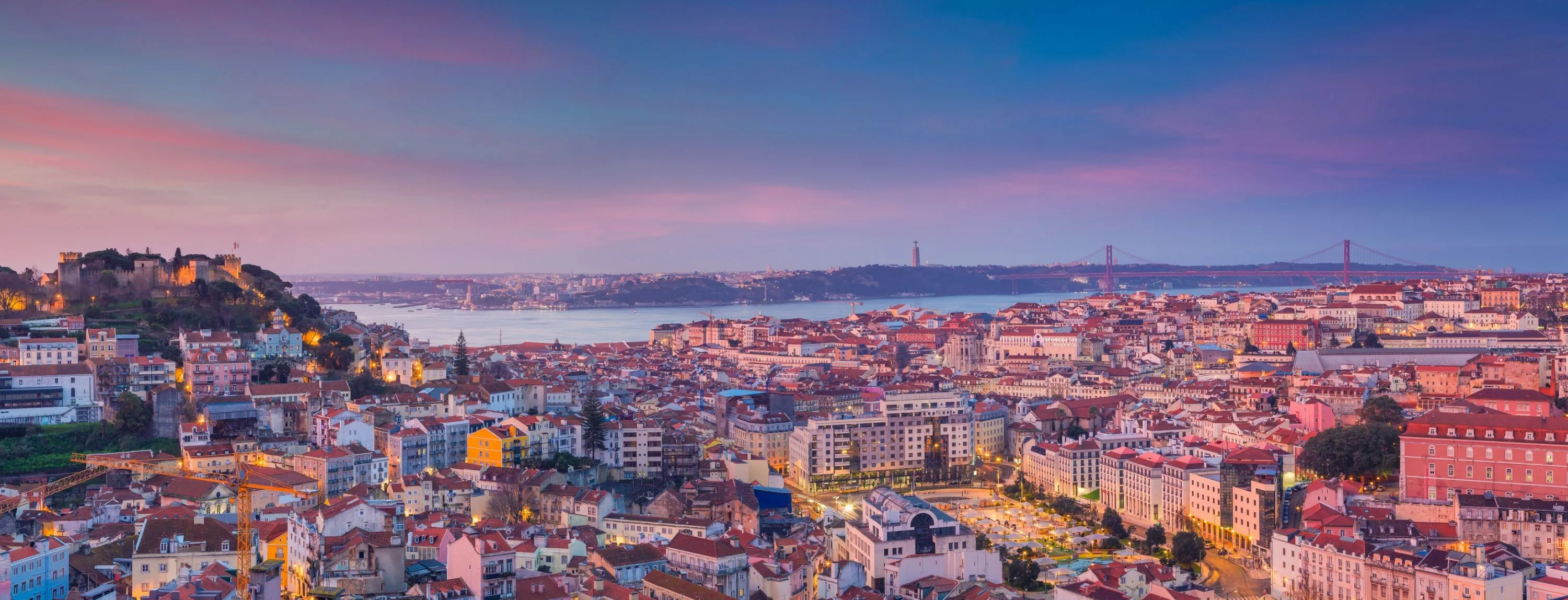
Lisbon
The charm of Lisbon is simply irresistible. One of Europe's "forgotten" capitals, Lisbon effortlessly blends old-world history with a modern, cosmopolitan vibe. A must-visit destination for any traveler, Lisbon offers iconic sights like the historic Belém Tower and the stunning Jerónimos Monastery, both UNESCO World Heritage Sites. There is so much to experience in this city, and it helps to explore it through your own personal interests. Foodie? You’re in luck. Lisbon's cuisine will capture your heart with fresh seafood at Mercado da Ribeira and the famed pastéis de nata from Pastéis de Belém. Love history? Discover the city’s past through the ancient streets of Alfama, where every corner unveils a piece of Lisbon’s storied heritage, from Roman influences to the Age of Exploration. Art and architecture lovers will be enchanted by the Azulejos (traditional tiles) that decorate the city, or can dive into contemporary works at the MAAT museum. And as you climb the hills of Bairro Alto or gaze across the city from the iconic viewpoint at Miradouro da Senhora do Monte, you'll realize that Lisbon’s beauty never fades. Whether riding a vintage tram through the narrow streets or watching the sunset over the River Tagus, it’s easy to fall in love with this sun-drenched gem of Portugal.
Read More
Learn About Lisbon
Build Lisbon Trip
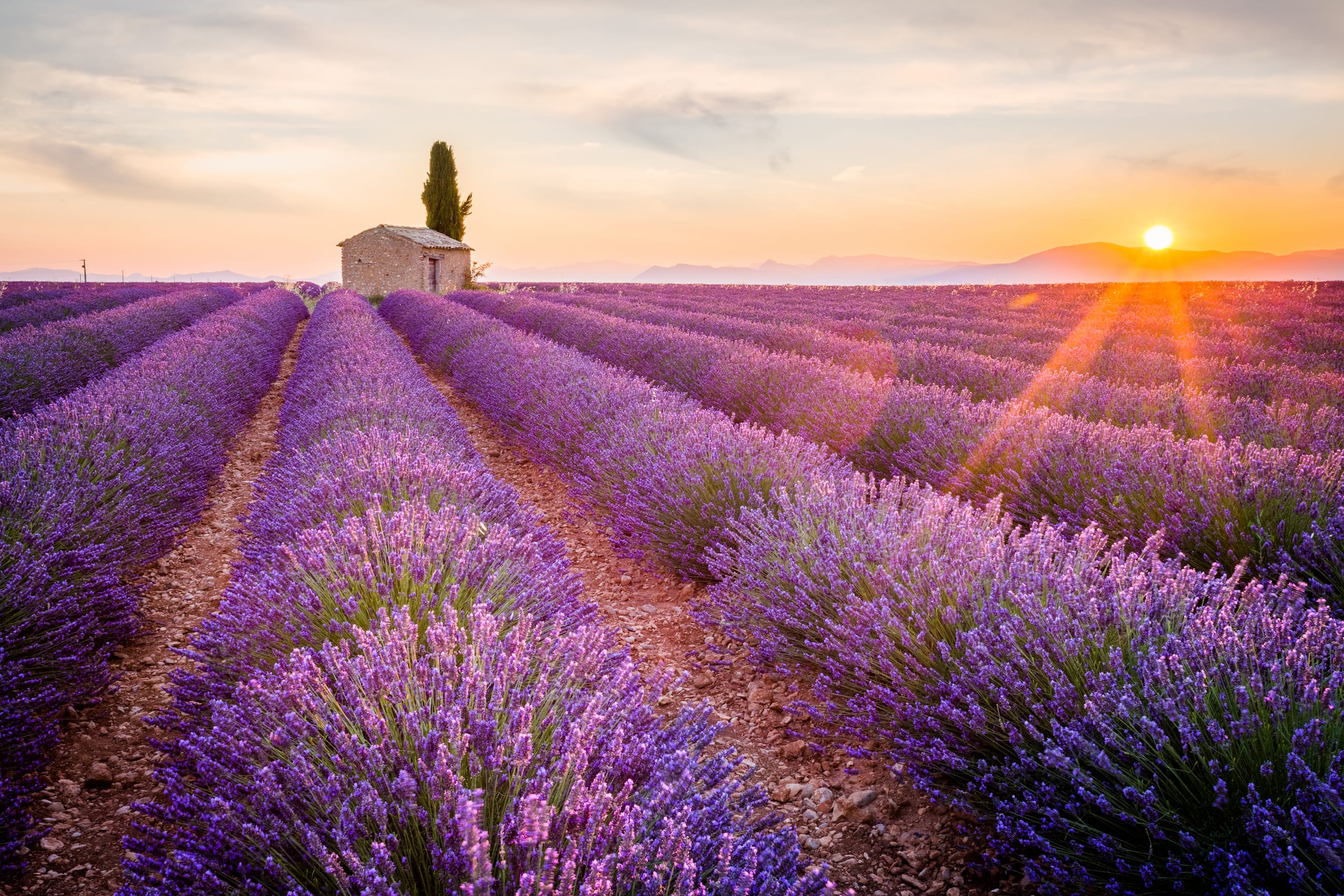
Aix en Provence
Aix en Provence is a warm city baked into the Provence-Alpes-Côte region of Southern France. Often referred to as simply ‘Aix’, this city is a starting point for traveling the Provencal region. Aix is set amongst a backdrop of rambling vineyards, quaint villages, and the imposing Sainte-Victoire mountain range. It’s no surprise that artists like Cézanne have devoted lifetimes to painting this landscape. Aromatic lavender fields in the north blossom once a year with a scent that defines the French countryside. Head south and you’ll find the rocky Mediterranean shore with dramatic Calanques cliffs and clear blue waters. With the sun out nearly all year round, locals live the epitome of the Mediterranean lifestyle. Wander through narrow medieval streets, shop at lively marketplaces, and enjoy a glass of rosé on a cafe terrace beneath the gentle Provencal sun. From old-world architecture and bubbling fountains to refined galleries and leafy parks, this leisurely city has everything you could ask of a French vacation.
Read More
Learn About Aix en Provence
Build Aix en Provence Trip
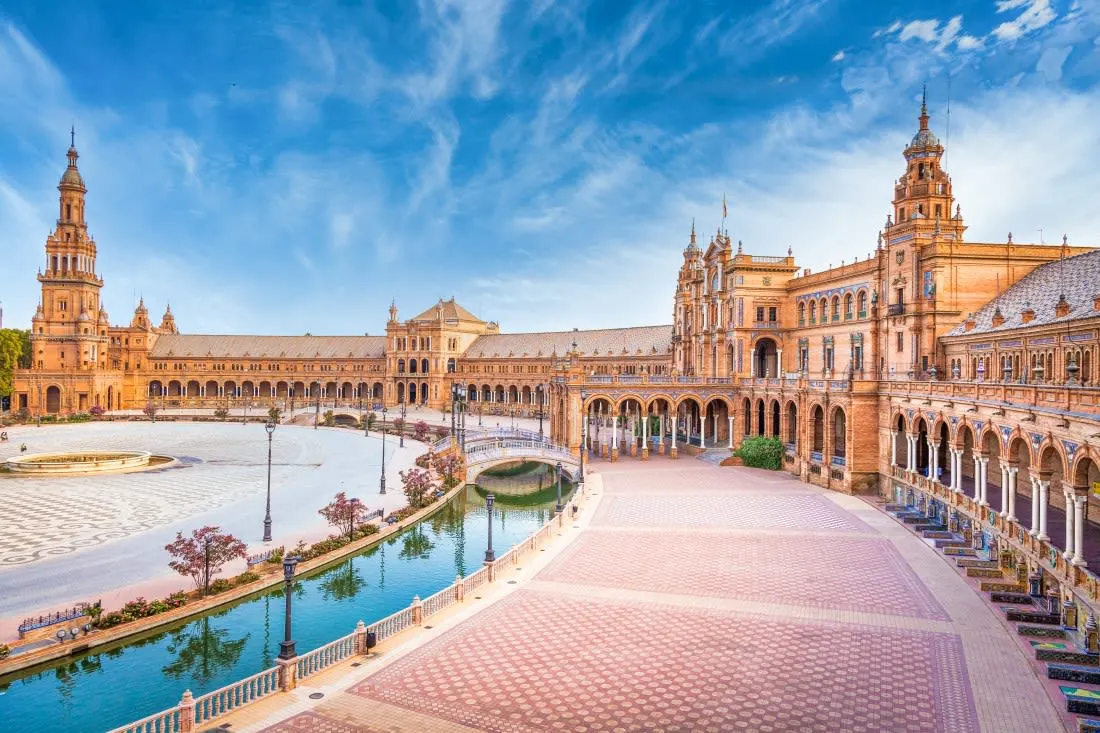
Seville
Seville, the capital of Spain's Andalusia region, is a city rich in history and culture. Architectural marvels like Plaza de España, Seville Cathedral, and the Alcazar reflect its storied past, while its vibrant cuisine and flamenco music showcase its lively present. Key landmarks include the Giralda, a minaret turned bell tower, and the bustling old town, filled with narrow streets, traditional tapas bars, and lively plazas. Whether exploring historical sites or savoring local flavors, Seville captivates with its spirited atmosphere and colorful heritage, making it a true center of Spanish culture and tradition.
Read More
Learn About Seville
Build Seville Trip

Barcelona
Barcelona, the cosmopolitan capital of Catalonia, is a city that dances to a rhythm of its own. Known for its architectural wonders and vibrant street life, this city is a tapestry of rich history and contemporary culture. Wander through its bustling streets and you'll feel the pulse of heritage and innovation beating as one. From the awe-inspiring Sagrada Familia to the colorful mosaics of Park Guell, Barcelona offers endless avenues to explore and discover. As the sun sets, the city transforms into a lively spectacle of lights and shadows, inviting you to indulge in its culinary delights and spirited nightlife. Whether you’re soaking up the Mediterranean sun on its beaches or exploring its Gothic quarters, Barcelona promises an unforgettable journey that will captivate your heart and stir your soul.
Read More
Learn About Barcelona
Build Barcelona Trip
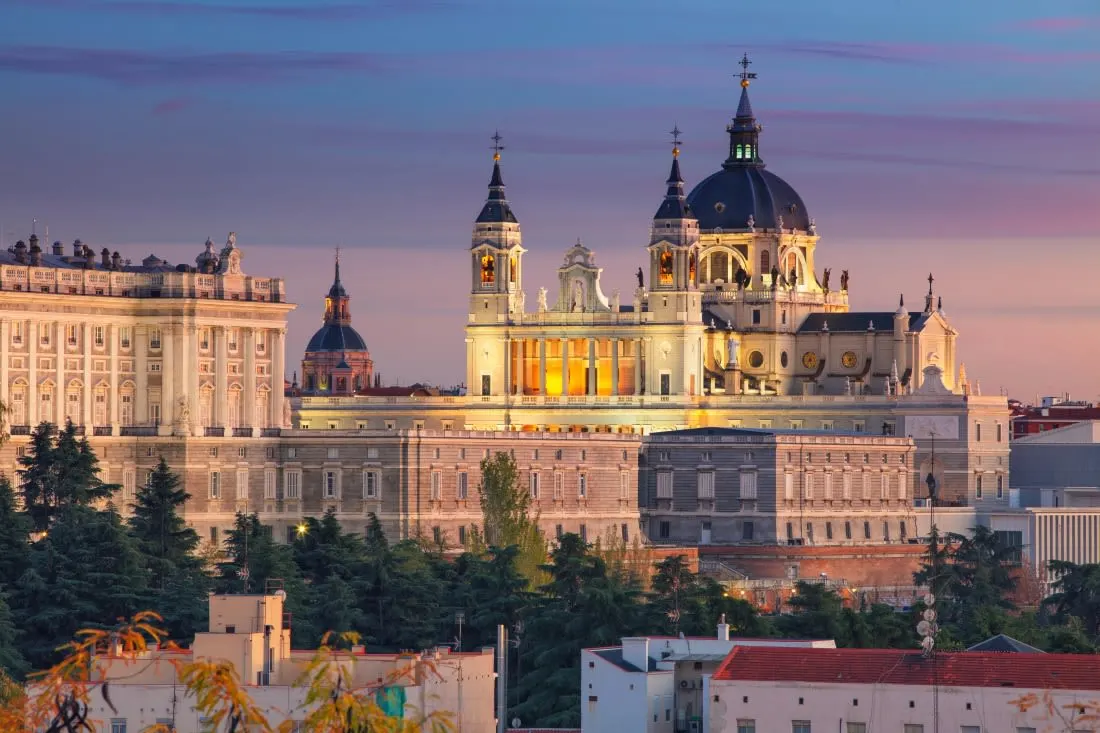
Madrid
What are the best Madrid recommendations for Madrid travel? Take two parts culture, two part history, douse it with art, sprinkle it all with lots of Spanish zest, and live vigorously: That's the recipe for Madrid, Spain's capital. Let Go Real be your guide to Madrid, the city alive with the rhythms of passionate flamenco on its cosmopolitan streets, inviting travelers into its warm embrace. Here, art enthusiasts can lose themselves in the hallowed halls of the Prado Museum, home to masterpieces by Velázquez, Goya, and El Greco, while the Reina Sofia and Thyssen-Bornemisza museums complete Madrid's famed Art Triangle, offering a journey through centuries of art history. The city's culinary scene is equally compelling, with tapas bars and bustling markets like Mercado San Miguel offering a taste of Spain's rich gastronomic heritage through an array of tapas, wines, and cheeses. Madrid's architectural splendor is evident in its royal palaces, ornate plazas, and expansive parks, such as the Retiro, a green oasis in the heart of the city where locals and tourists alike find respite by its serene lake. As night falls, Madrid's streets come alive with an infectious energy, from the historic tapas bars in the Latina district to the chic dancehalls in Malasaña and Chueca, reflecting the city's open-hearted spirit and its inhabitants' joie de vivre. With Go Real's Madrid sightseeing guide and using our Madrid tips, you will find the best place to bask in the sun at a lively terrace café, explore the treasures of the Hapsburg Madrid, or discover your own precious finds at Rastro's flea market. With our best Madrid travelguide, the city offers an endless array of experiences that beckon the curious traveler to taste its many charms.
Read More
Learn About Madrid
Build Madrid Trip

Porto
With cliffs like these, who needs skyscrapers? Porto drapes its steep hillsides with colorful homes, ancient palaces, convents, and factories, each telling a story. These precipitous structures loom above the bustling Ribeira District, or sparkle like jewels when viewed from the venerable Clérigos Tower, perched on a central hilltop. Porto can be sunny or rainy, just like its architecture; the sober, local granite provides a solid foundation from which bright azulejos tiles radiate warmth. The locals’ homes that still grace even the most touristed areas are as thrilling to see as the iconic Sé Cathedral. Explore Porto's winding streets through the Centro Histórico, marvel at the nearly magical Lello bookstore, sip and snack your way through the vibrant Bolhão market, or delve into the rich history of port wine. With our Porto travel guide and tailored Porto travel itineraries, you’ll uncover delightful contrasts of old and new. No matter where you wander, Porto promises to leave you with sweet memories of its breathtaking heights and vibrant spirit.
Read More
Learn About Porto
Build Porto Trip

Lisbon
The charm of Lisbon is simply irresistible. One of Europe's "forgotten" capitals, Lisbon effortlessly blends old-world history with a modern, cosmopolitan vibe. A must-visit destination for any traveler, Lisbon offers iconic sights like the historic Belém Tower and the stunning Jerónimos Monastery, both UNESCO World Heritage Sites. There is so much to experience in this city, and it helps to explore it through your own personal interests. Foodie? You’re in luck. Lisbon's cuisine will capture your heart with fresh seafood at Mercado da Ribeira and the famed pastéis de nata from Pastéis de Belém. Love history? Discover the city’s past through the ancient streets of Alfama, where every corner unveils a piece of Lisbon’s storied heritage, from Roman influences to the Age of Exploration. Art and architecture lovers will be enchanted by the Azulejos (traditional tiles) that decorate the city, or can dive into contemporary works at the MAAT museum. And as you climb the hills of Bairro Alto or gaze across the city from the iconic viewpoint at Miradouro da Senhora do Monte, you'll realize that Lisbon’s beauty never fades. Whether riding a vintage tram through the narrow streets or watching the sunset over the River Tagus, it’s easy to fall in love with this sun-drenched gem of Portugal.
Read More
Learn About Lisbon
Build Lisbon Trip

Aix en Provence
Aix en Provence is a warm city baked into the Provence-Alpes-Côte region of Southern France. Often referred to as simply ‘Aix’, this city is a starting point for traveling the Provencal region. Aix is set amongst a backdrop of rambling vineyards, quaint villages, and the imposing Sainte-Victoire mountain range. It’s no surprise that artists like Cézanne have devoted lifetimes to painting this landscape. Aromatic lavender fields in the north blossom once a year with a scent that defines the French countryside. Head south and you’ll find the rocky Mediterranean shore with dramatic Calanques cliffs and clear blue waters. With the sun out nearly all year round, locals live the epitome of the Mediterranean lifestyle. Wander through narrow medieval streets, shop at lively marketplaces, and enjoy a glass of rosé on a cafe terrace beneath the gentle Provencal sun. From old-world architecture and bubbling fountains to refined galleries and leafy parks, this leisurely city has everything you could ask of a French vacation.
Read More
Learn About Aix en Provence
Build Aix en Provence Trip

Seville
Seville, the capital of Spain's Andalusia region, is a city rich in history and culture. Architectural marvels like Plaza de España, Seville Cathedral, and the Alcazar reflect its storied past, while its vibrant cuisine and flamenco music showcase its lively present. Key landmarks include the Giralda, a minaret turned bell tower, and the bustling old town, filled with narrow streets, traditional tapas bars, and lively plazas. Whether exploring historical sites or savoring local flavors, Seville captivates with its spirited atmosphere and colorful heritage, making it a true center of Spanish culture and tradition.
Read More
Learn About Seville
Build Seville Trip

Barcelona
Barcelona, the cosmopolitan capital of Catalonia, is a city that dances to a rhythm of its own. Known for its architectural wonders and vibrant street life, this city is a tapestry of rich history and contemporary culture. Wander through its bustling streets and you'll feel the pulse of heritage and innovation beating as one. From the awe-inspiring Sagrada Familia to the colorful mosaics of Park Guell, Barcelona offers endless avenues to explore and discover. As the sun sets, the city transforms into a lively spectacle of lights and shadows, inviting you to indulge in its culinary delights and spirited nightlife. Whether you’re soaking up the Mediterranean sun on its beaches or exploring its Gothic quarters, Barcelona promises an unforgettable journey that will captivate your heart and stir your soul.
Read More
Learn About Barcelona
Build Barcelona Trip

Madrid
What are the best Madrid recommendations for Madrid travel? Take two parts culture, two part history, douse it with art, sprinkle it all with lots of Spanish zest, and live vigorously: That's the recipe for Madrid, Spain's capital. Let Go Real be your guide to Madrid, the city alive with the rhythms of passionate flamenco on its cosmopolitan streets, inviting travelers into its warm embrace. Here, art enthusiasts can lose themselves in the hallowed halls of the Prado Museum, home to masterpieces by Velázquez, Goya, and El Greco, while the Reina Sofia and Thyssen-Bornemisza museums complete Madrid's famed Art Triangle, offering a journey through centuries of art history. The city's culinary scene is equally compelling, with tapas bars and bustling markets like Mercado San Miguel offering a taste of Spain's rich gastronomic heritage through an array of tapas, wines, and cheeses. Madrid's architectural splendor is evident in its royal palaces, ornate plazas, and expansive parks, such as the Retiro, a green oasis in the heart of the city where locals and tourists alike find respite by its serene lake. As night falls, Madrid's streets come alive with an infectious energy, from the historic tapas bars in the Latina district to the chic dancehalls in Malasaña and Chueca, reflecting the city's open-hearted spirit and its inhabitants' joie de vivre. With Go Real's Madrid sightseeing guide and using our Madrid tips, you will find the best place to bask in the sun at a lively terrace café, explore the treasures of the Hapsburg Madrid, or discover your own precious finds at Rastro's flea market. With our best Madrid travelguide, the city offers an endless array of experiences that beckon the curious traveler to taste its many charms.
Read More
Learn About Madrid
Build Madrid Trip

Porto
With cliffs like these, who needs skyscrapers? Porto drapes its steep hillsides with colorful homes, ancient palaces, convents, and factories, each telling a story. These precipitous structures loom above the bustling Ribeira District, or sparkle like jewels when viewed from the venerable Clérigos Tower, perched on a central hilltop. Porto can be sunny or rainy, just like its architecture; the sober, local granite provides a solid foundation from which bright azulejos tiles radiate warmth. The locals’ homes that still grace even the most touristed areas are as thrilling to see as the iconic Sé Cathedral. Explore Porto's winding streets through the Centro Histórico, marvel at the nearly magical Lello bookstore, sip and snack your way through the vibrant Bolhão market, or delve into the rich history of port wine. With our Porto travel guide and tailored Porto travel itineraries, you’ll uncover delightful contrasts of old and new. No matter where you wander, Porto promises to leave you with sweet memories of its breathtaking heights and vibrant spirit.
Read More
Learn About Porto
Build Porto Trip
prev
next


 Map of Your Itinerary Route
Map of Your Itinerary Route
Zoom In to the cities to see your itinerary in more detail


 4.8
4.8 








